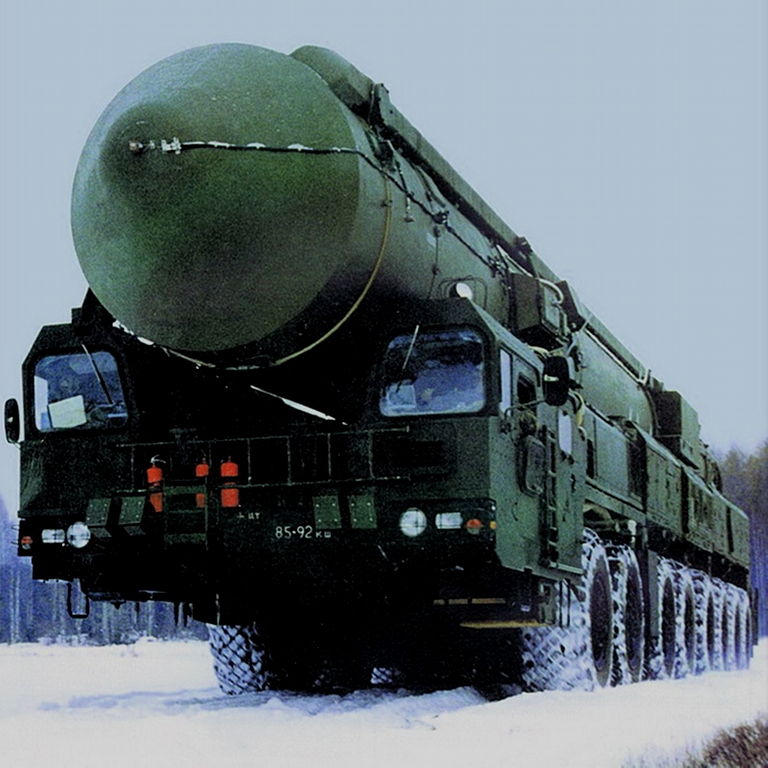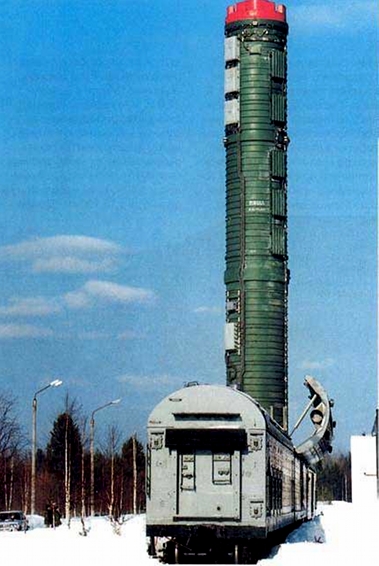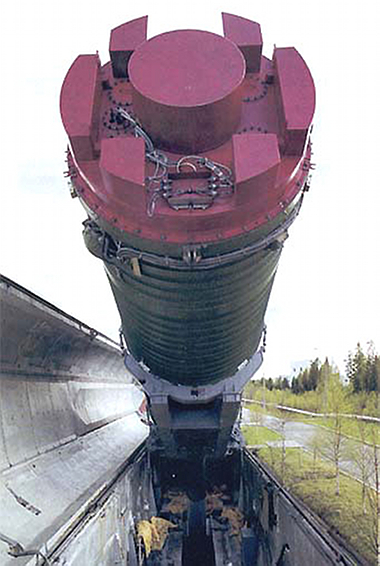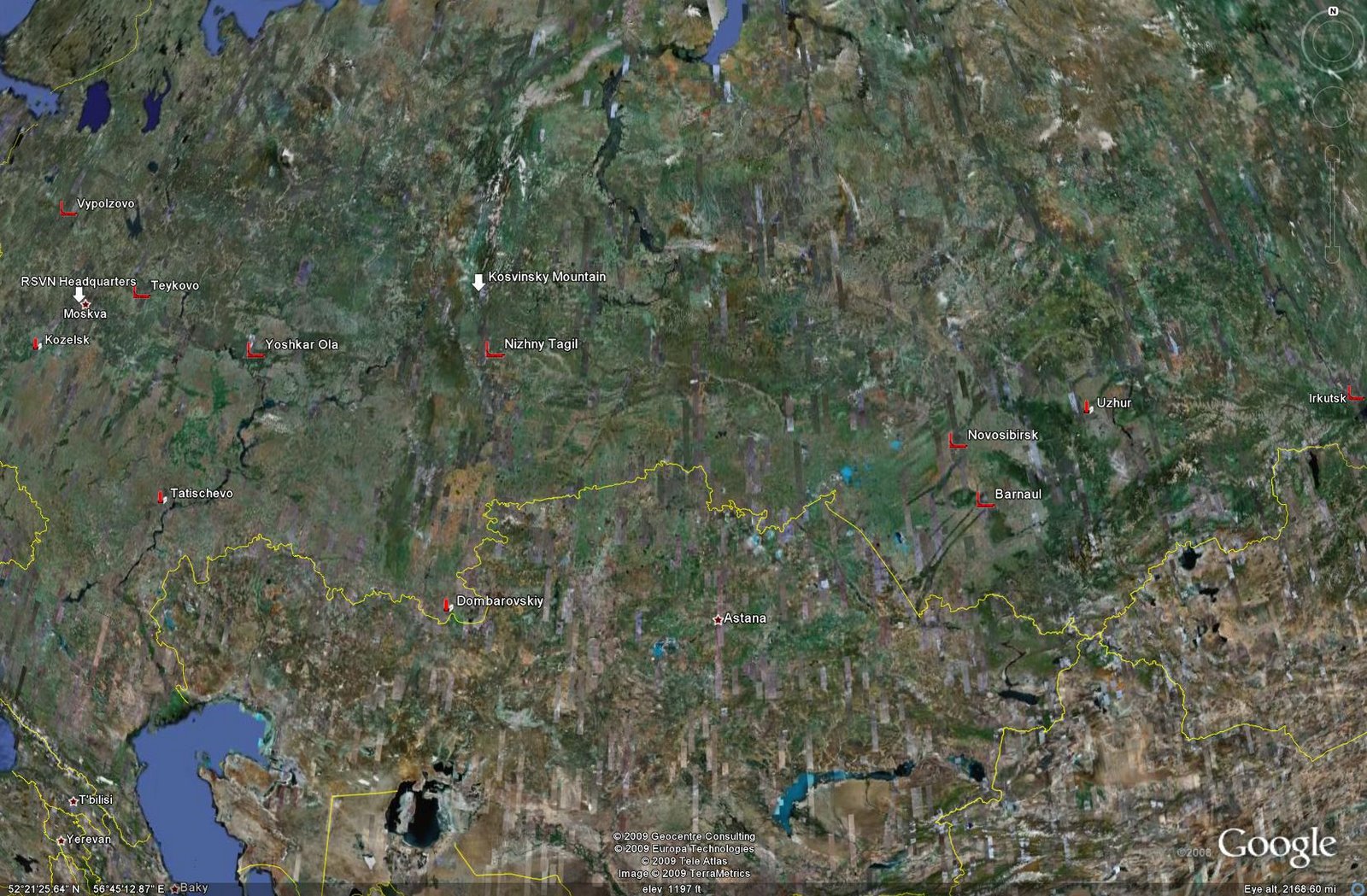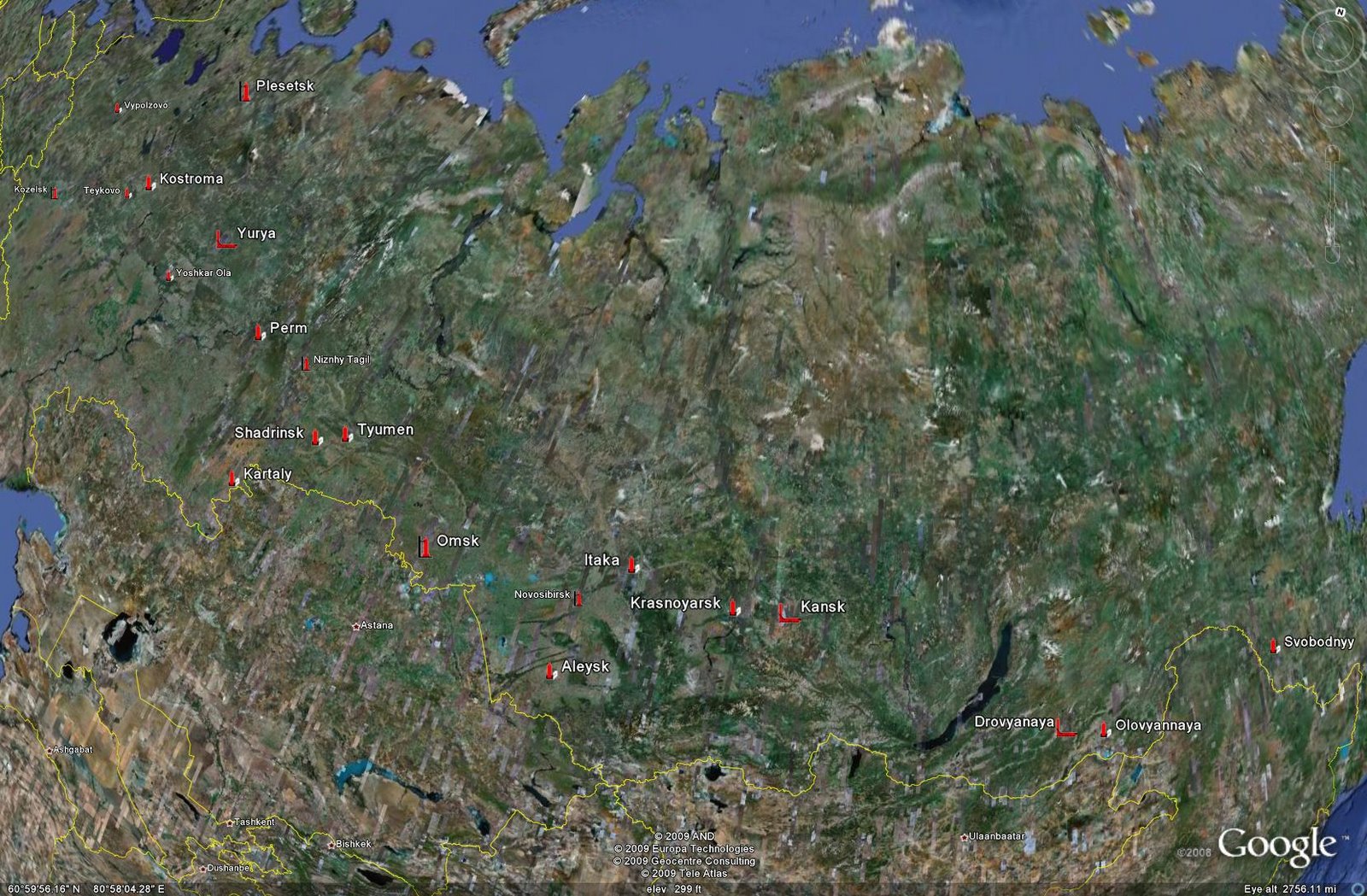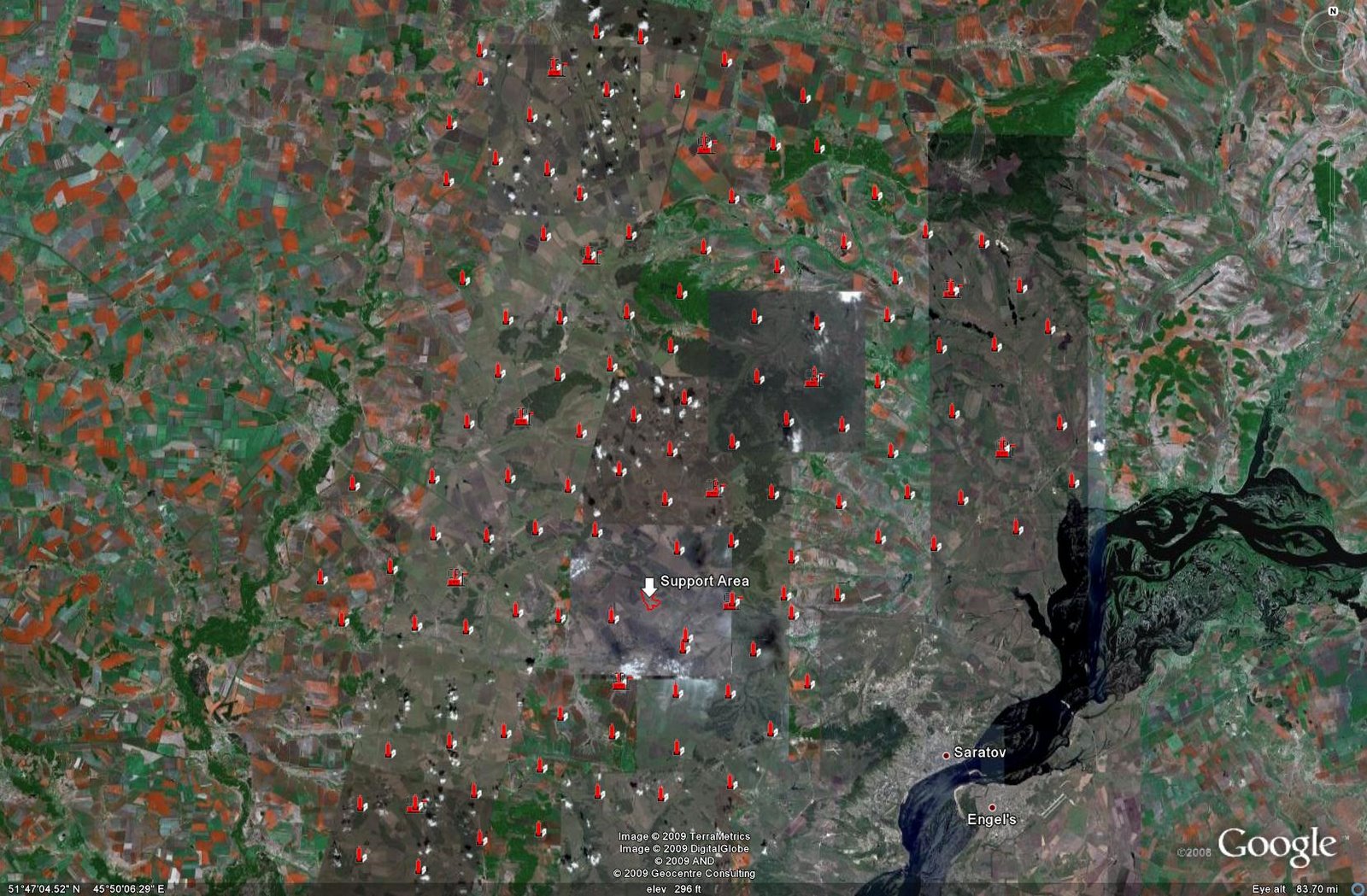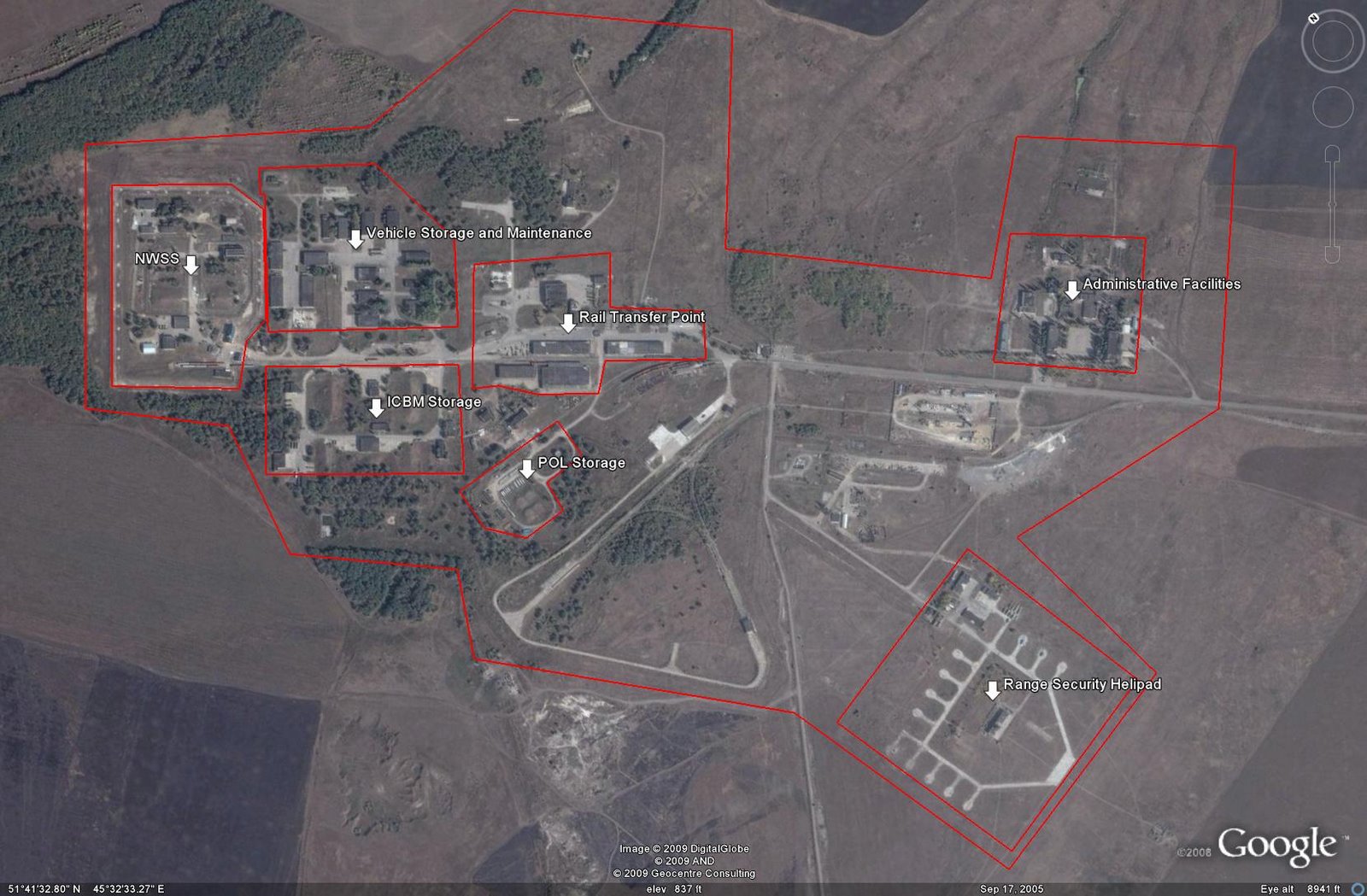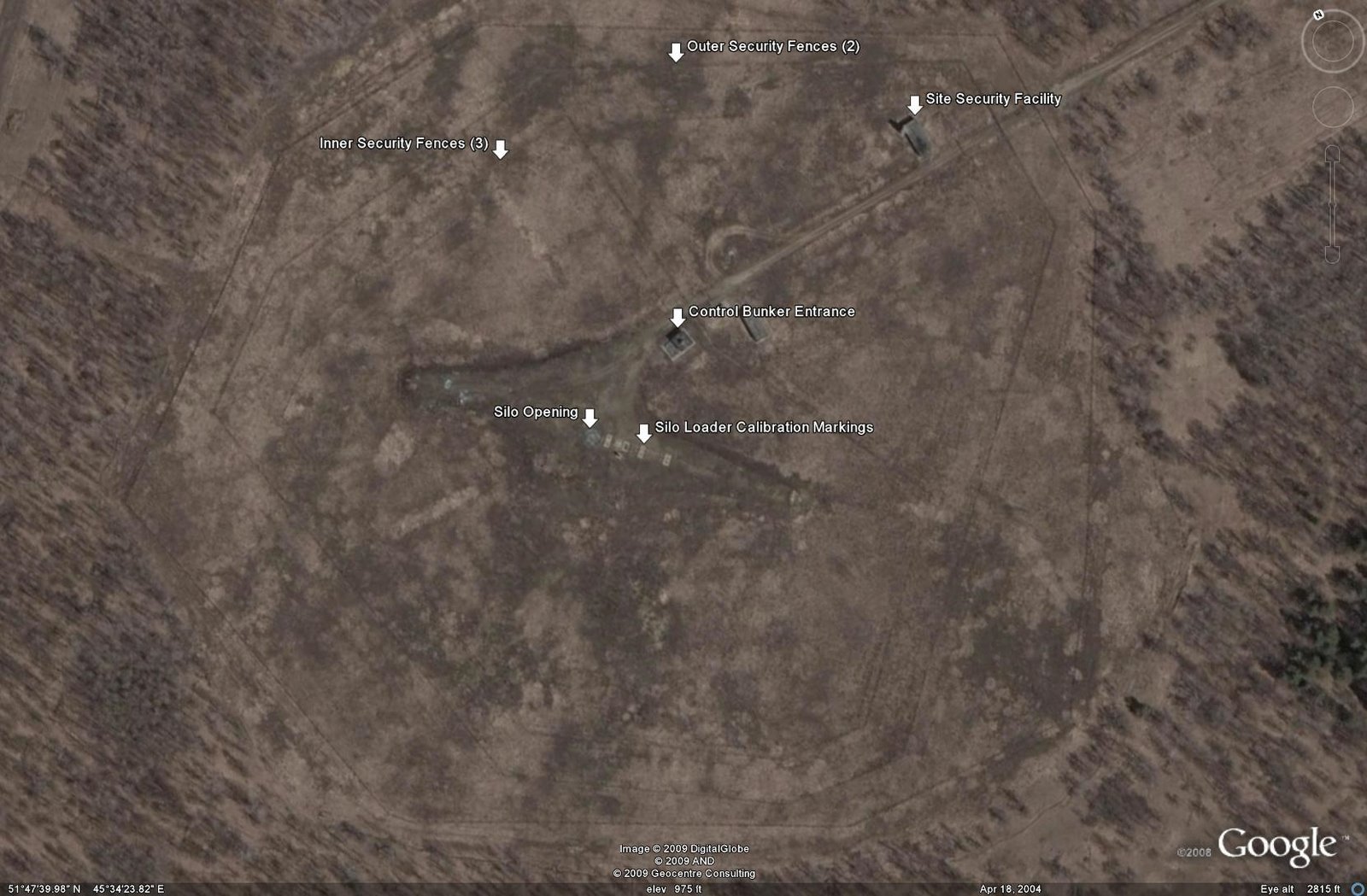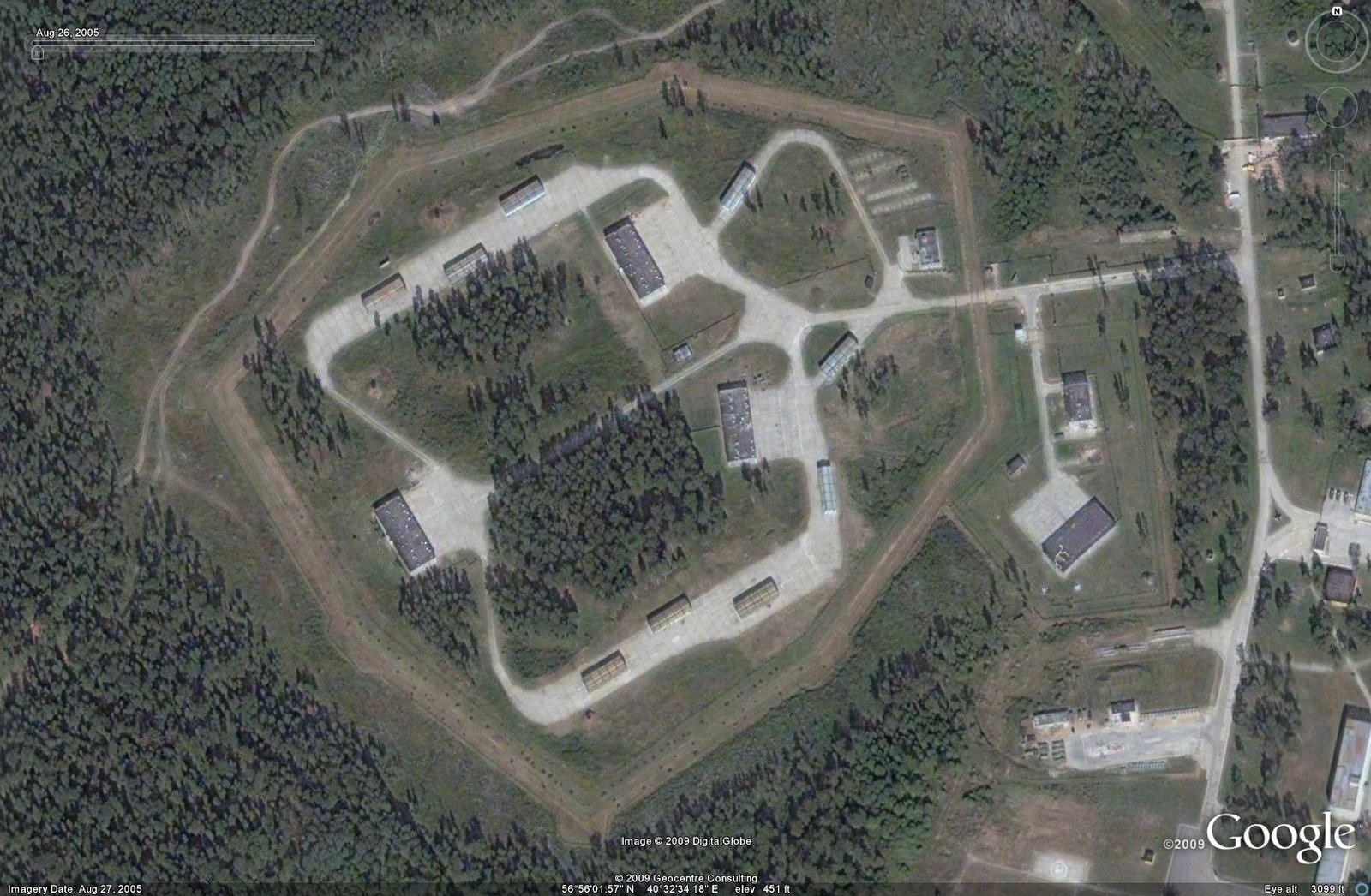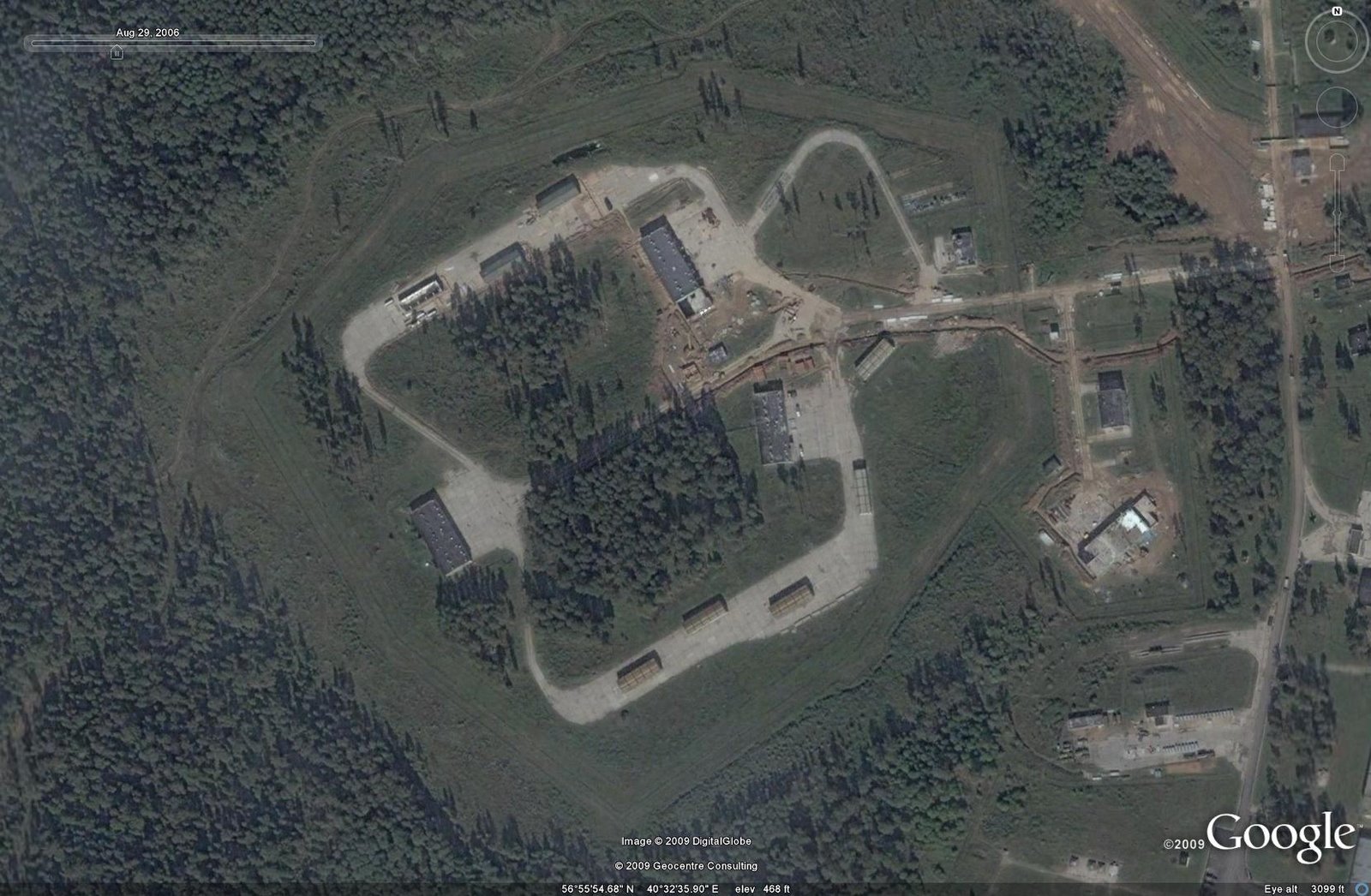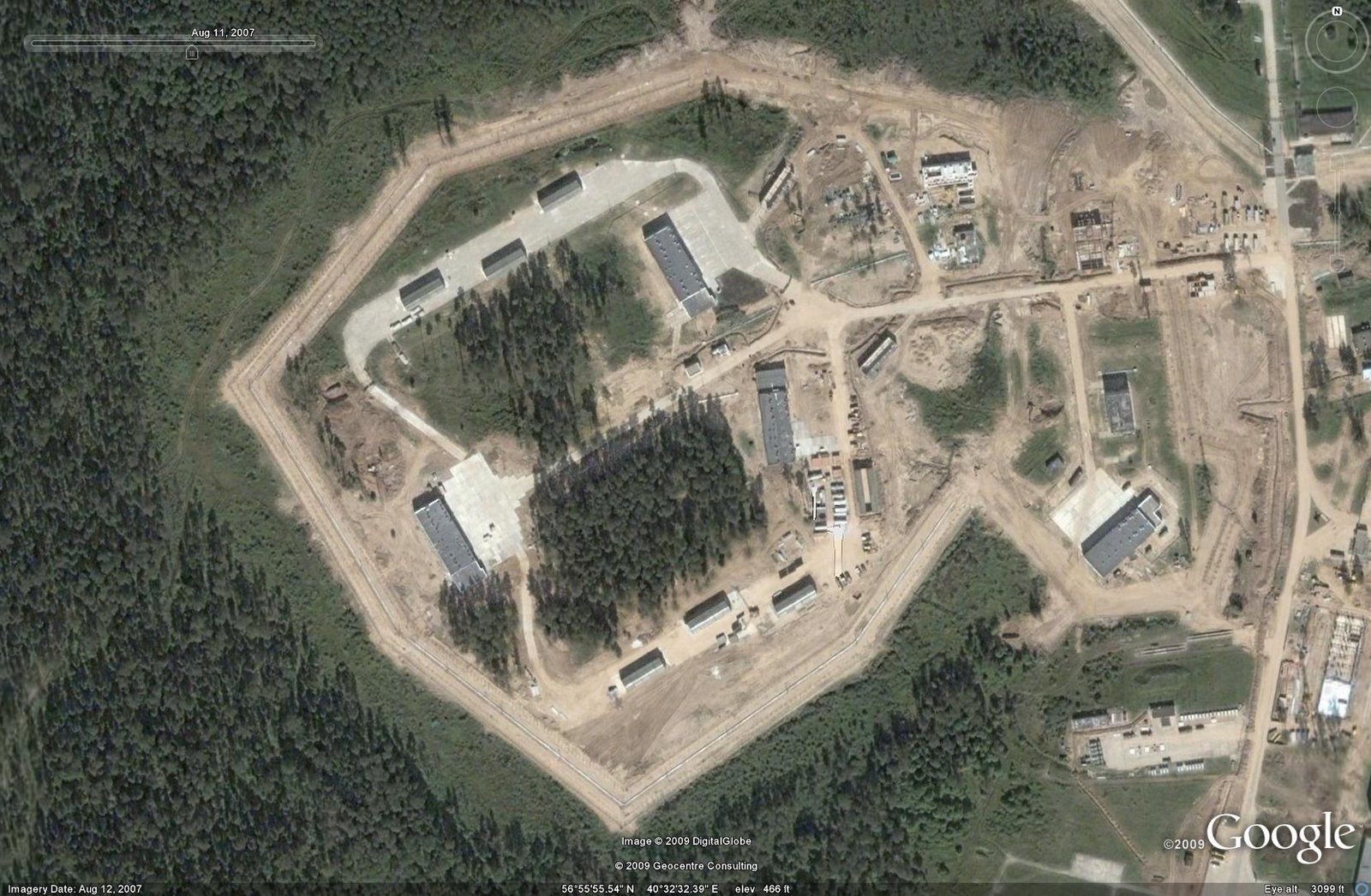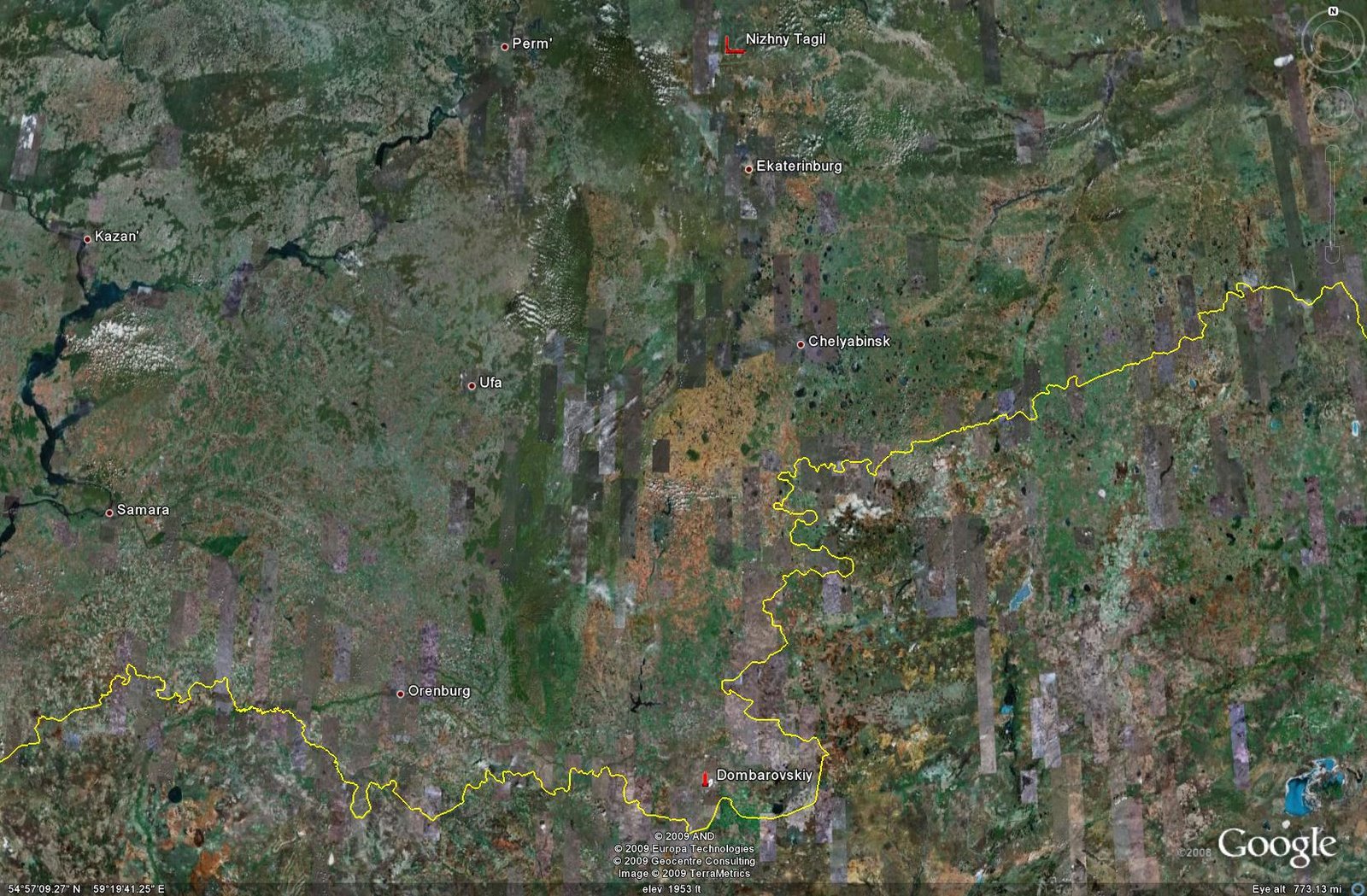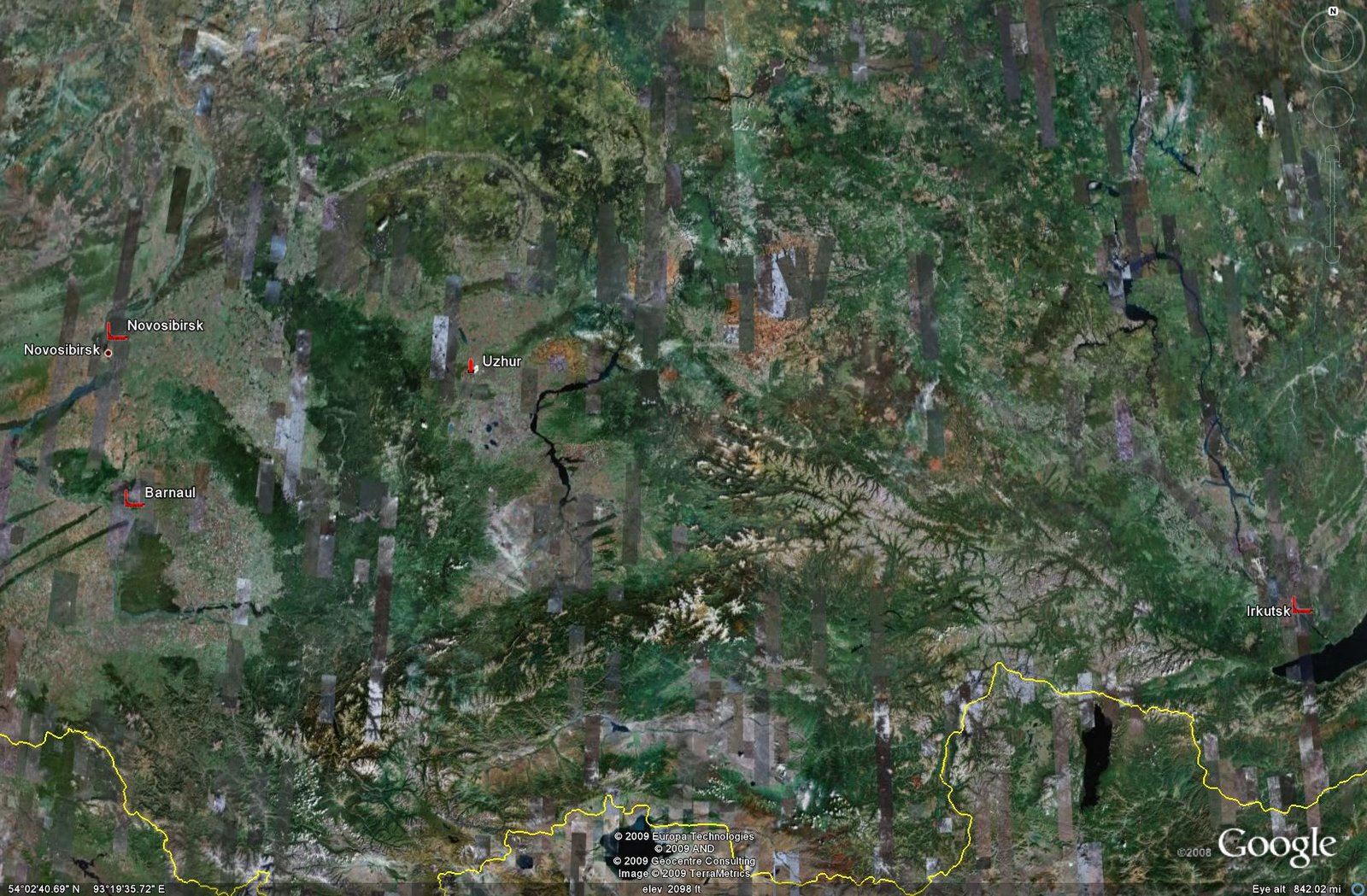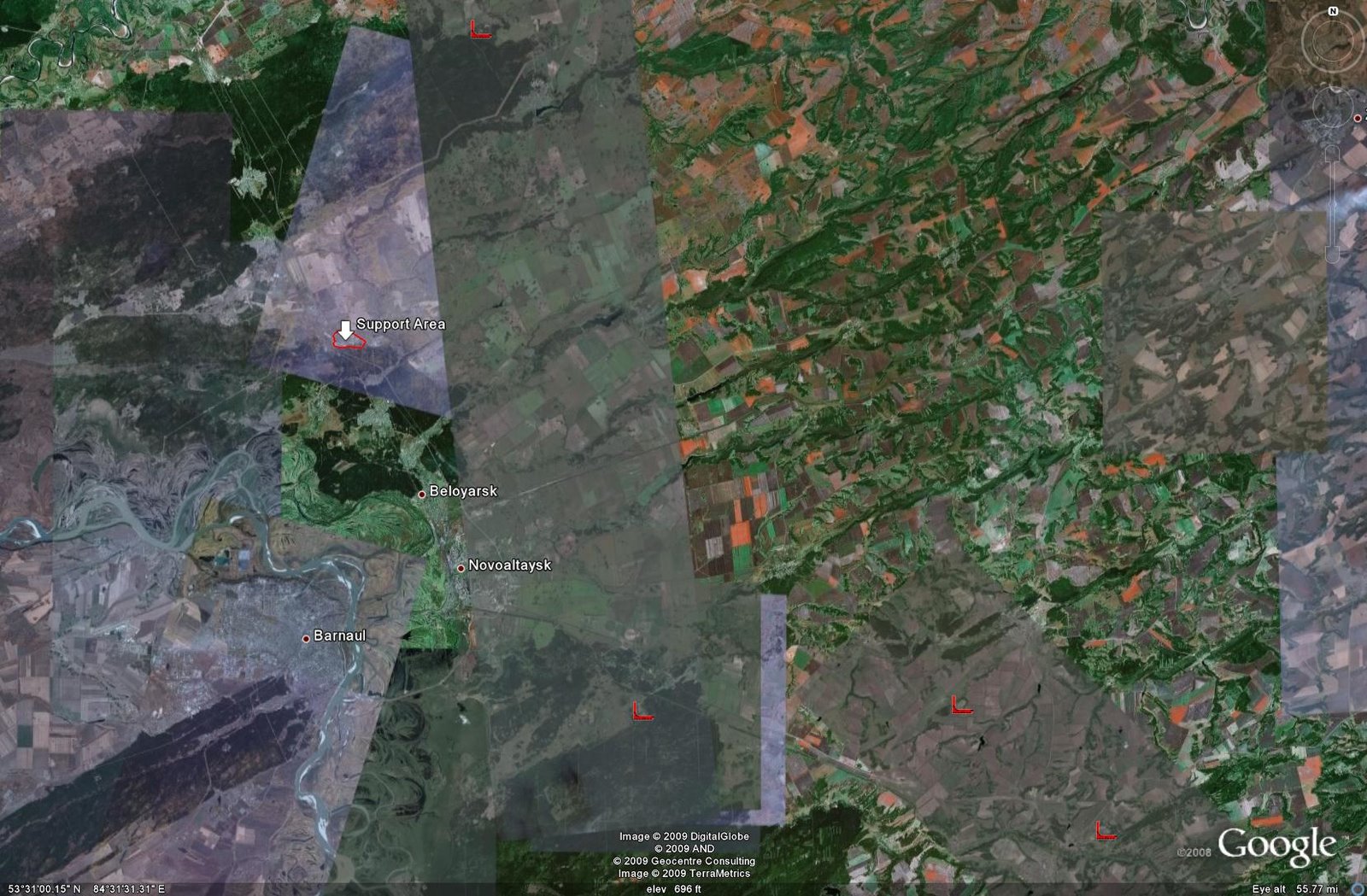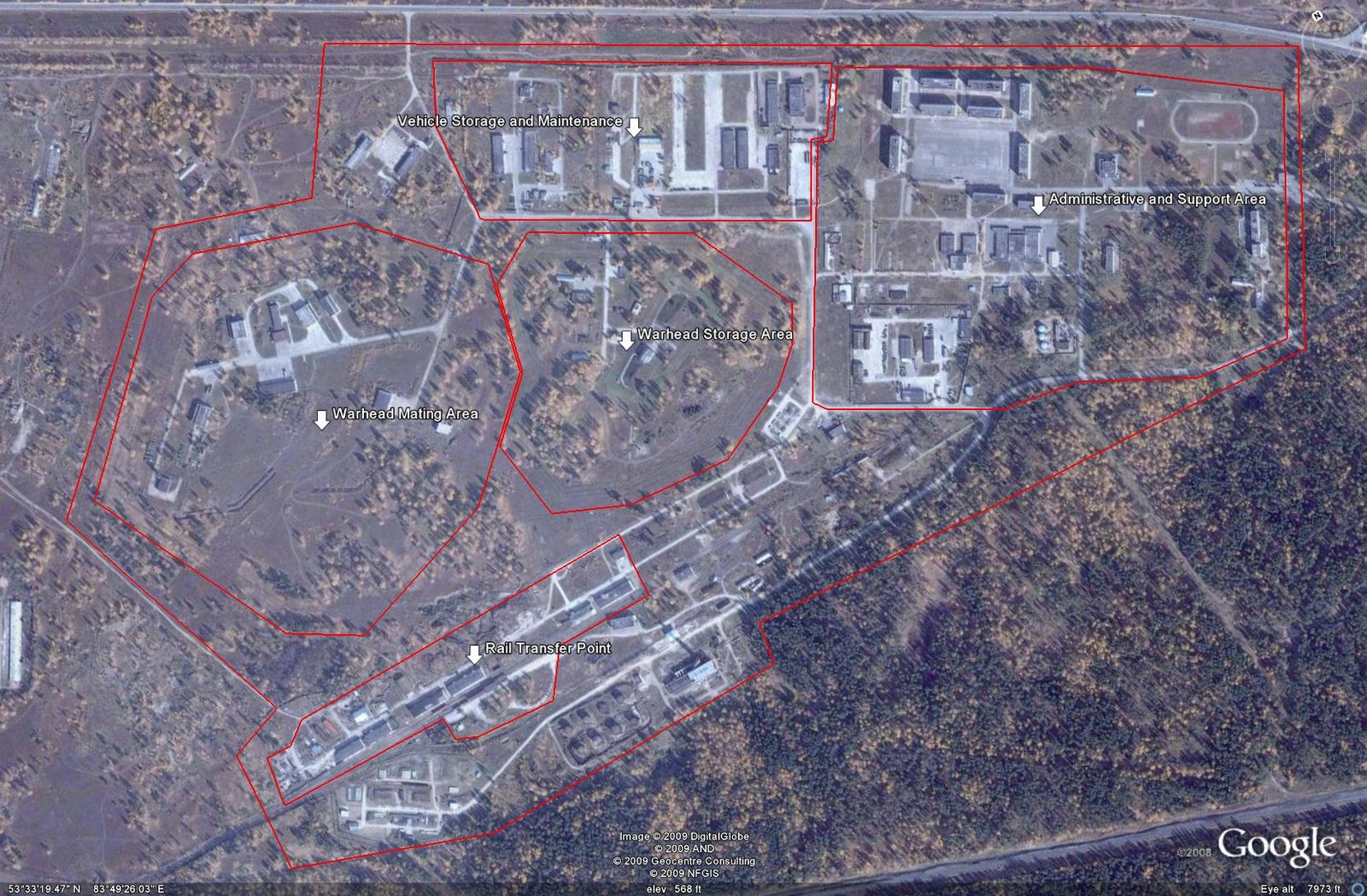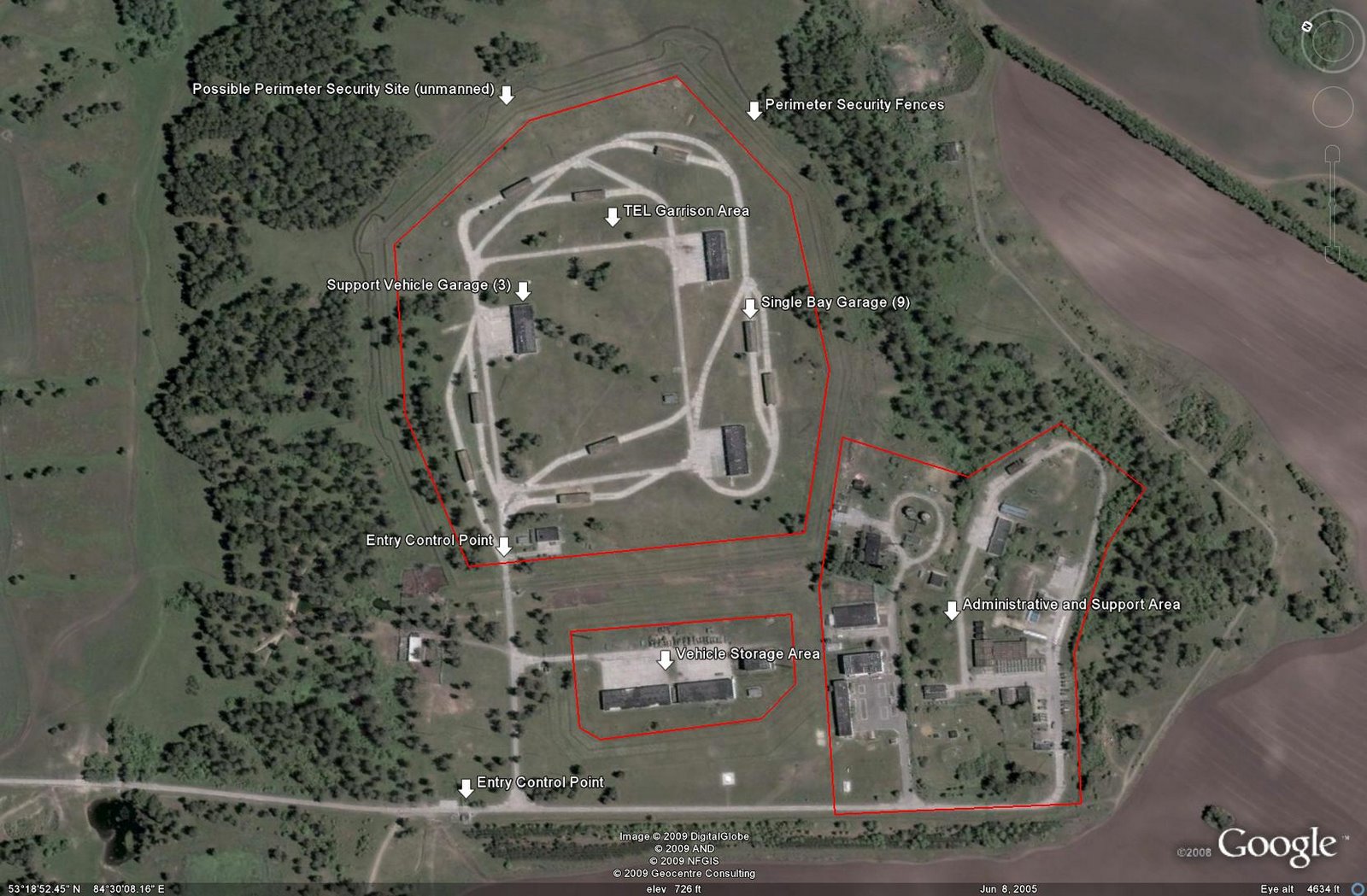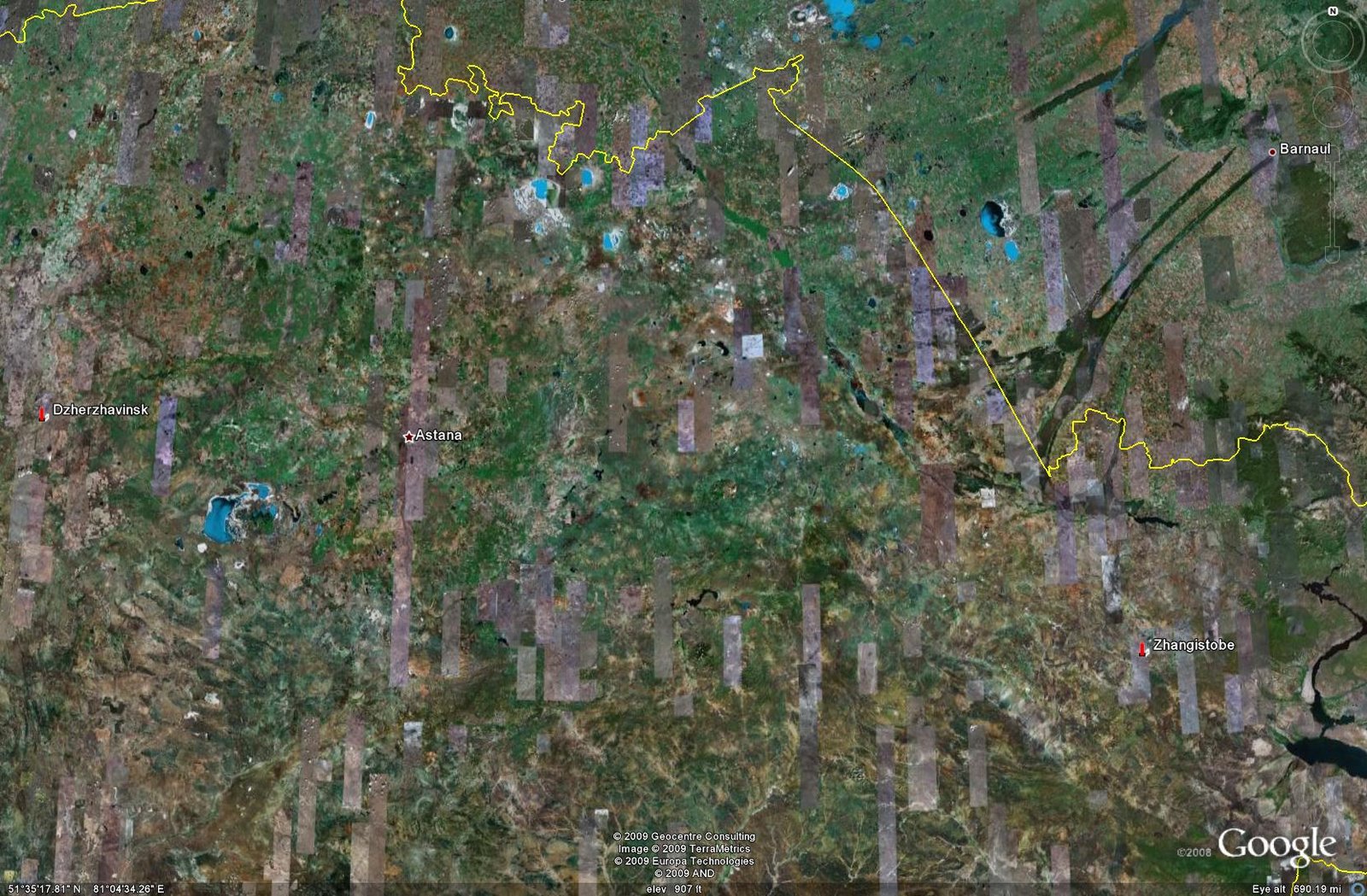|
||||||||||||||||||||||
![Home - Air Power Australia Website [Click for more ...]](APA/APA-Title-Main.png) |
||||||||||||||||||||||
![Sukhoi PAK-FA and Flanker Index Page [Click for more ...]](APA/flanker.png) |
![F-35 Joint Strike Fighter Index Page [Click for more ...]](APA/jsf.png) |
![Weapons Technology Index Page [Click for more ...]](APA/weps.png) |
![News and Media Related Material Index Page [Click for more ...]](APA/media.png) |
|||||||||||||||||||
![Surface to Air Missile Systems / Integrated Air Defence Systems Index Page [Click for more ...]](APA/sams-iads.png) |
![Ballistic Missiles and Missile Defence Page [Click for more ...]](APA/msls-bmd.png) |
![Air Power and National Military Strategy Index Page [Click for more ...]](APA/strategy.png) |
![Military Aviation Historical Topics Index Page [Click for more ...]](APA/history.png)
|
![Intelligence, Surveillance and Reconnaissance and Network Centric Warfare Index Page [Click for more ...]](APA/isr-ncw.png) |
![Information Warfare / Operations and Electronic Warfare Index Page [Click for more ...]](APA/iw.png) |
![Systems and Basic Technology Index Page [Click for more ...]](APA/technology.png) |
![Related Links Index Page [Click for more ...]](APA/links.png) |
|||||||||||||||
![Homepage of Australia's First Online Journal Covering Air Power Issues (ISSN 1832-2433) [Click for more ...]](APA/apa-analyses.png) |
||||||||||||||||||||||
| Last Updated: Mon Jan 27 11:18:09 UTC 2014 | ||||||||||||||||||||||
|
||||||||||||||||||||||
Ракетные Войска Стратегического Назначения:Russia's Strategic Missile Forces
|
||
| Technical Report APA-TR-2009-1202 Sean O'Connor, BA, MS (AMU) December 2009 Updated April, 2012 Text © 2009 Sean O'Connor Layout, Line Artwork © 2009 Carlo Kopp  |
||
|
|
||
|
||
Background
|
||
Politics and MissilesAny historical discussion on the development of the Soviet ICBM force must begin with a brief discourse on the politics and key figures involved. As will become apparent, there was often competition between various designers and design bureaus to get their missile designs adopted for operational use. What should be stressed is that the three personalities involved in the development of many Soviet ICBMs and responsible for design bureaus which continued in that field once they were gone were true giants in the history of rocket and ICBM development. These personalities were Sergey Korolev, Mikhail Yangel, and Vladimir Chelomey. All of these men were pillars in the development of Soviet rocketry after the Second World War, and were in many cases a thorn in the side of politicians who had to approve or reject their designs. Politics also played a significant part in the development of many of the Soviet ICBMs; it was often the case that the designer who had the most favor with the government would get the best deal. |
||
The First Soviet ICBMThe first Soviet ICBM was the Korolev R-7. Development of the first Soviet ICBM was initiated in 1953, and Korolev's R-7 design was approved in 1954. Flight tests began at Baikonur in 1957, with the first test launch occurring on the 15th of May. This test flight represented the first trial of an ICBM design anywhere in the world, the first of many Soviet technological “firsts” of the Cold War. After numerous development issues, the R-7 was finally approved for service in January of 1960. The R-7The R-7 was a large, two stage ICBM. The missile's size and cryogenic liquid fuel made it a very ineffective strategic weapon. The cryogenic fuelling process and launch preparation cycle took nearly a day, and a missile could not remain fully fueled for more than 24 hours. The weapon also suffered from short range; the maximum range of 8,000 km meant that the weapon would have to be sited in Siberia if it was to be capable of striking targets in the United States. Korolev did develop and field an improved R-7A variant with increased range, but this was not enough to overcome the other problems the system as a whole suffered from. As such, Khrushchev canceled most of the planned deployments of the R-7. Four launch pads at the operational location near Plesetsk and two test pads at Baikonur were the only operational deployment sites of the R-7 ICBM family. R-7 Specifications Type: two-stage ICBM Launched from: prepared pad Maximum range: 8,000 km (R-7), 9,000-12,000 km (R-7A) CEP: 5 km Payload: 1 x 3-5 megaton RV Number deployed: 6 (1960-1967) Note: deployment figures represent the maximum number of the weapon deployed over its service life, with the time period that the weapons were operational included in parenthesis. This does not imply that the number of weapons given were available throughout the total service life, nor does it imply that all variants of a given ICBM were fielded at this strength. Currently deployed figures will be provided later in this article. The Move to Silo BasingIn order to overcome the weaknesses of the R-7, namely the limited alert time and the poor survivability of a weapon exposed on a fixed launch pad, the Soviet Union began to explore both storable fuels and silo basing. In 1956 Yangel was given the order to begin design work on an ICBM using storable liquid fuel. Development of Yangel's R-16 was authorized in 1958, and Korolev's complementary R-9 design, employing the more proven cryogenic fuel, was authorized for development in 1959. The R-16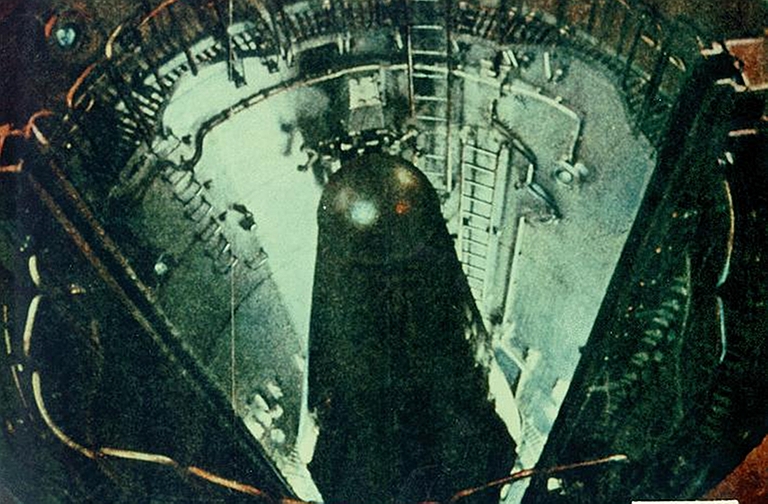 Yangel's R-16 was a two stage ICBM employing storable AK-27I/UDMH liquid propellant, enabling the weapon to remain fueled and ready for launch for up to 30 days, a significant improvement over the 24 hours of Korolev's R-7. The initial R-16 design was launched from a prepared surface pad complex referred to as Sheksna-N, while an improved R-16U was launched from a silo complex referred to as Sheksna-V. Sheksna-N complexes consisted of two launch pads and associated support infrastructure, while Sheksna-V complexes consisted of three silos. Flight testing of the R-16 began in October of 1960, and the weapon was approved for service in October of 1961. The silo-based R-16U was approved for service in July of 1963. The weapon is best known for the Nedelin disaster, in which up to 150 personnel may have been killed due to an R-16 missile's hypergolic propellants igniting on a launch pad. R-16 Specifications Type: two-stage ICBM Launched from: prepared pad (R-16), silo (R-16U) Maximum range: 11,000-13,000 km CEP: 2.7 km Payload: 1 3-6 megaton RV Number deployed: 202 (1961-1976) The R-9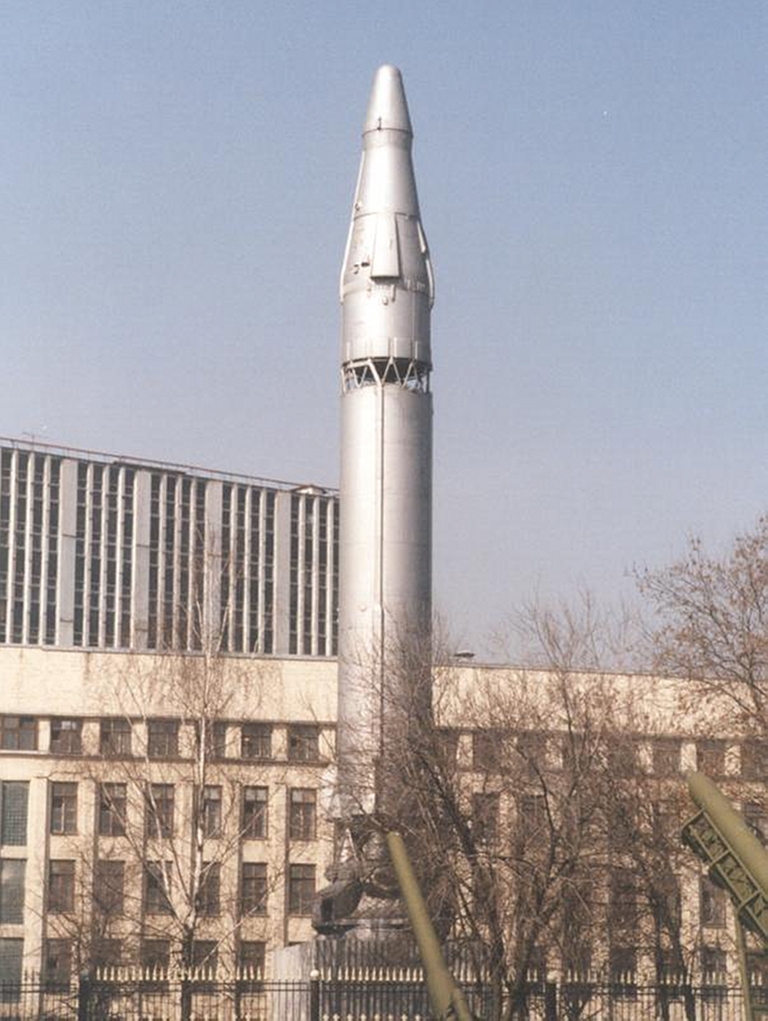 Korolev's R-9 design began flight testing in 1961, and was adopted for service in 1965. Like Yangel's R-16, Korolev's R-9 was developed with two launch modes: fixed surface pad and silo. The surface launch complex consisted of two launch pads and associated infrastructure, and was designated Dolina. This complex was unique in that it employed an automated launch preparation system, reducing preparation time to 20 minutes over the proposed non-automated Desna-N complex. The silo complex, designated Desna-V, consisted of three silos. R-9 Specifications Type: two-stage ICBM; LOX/Kerosene propellants Launched from: prepared pad or silo Maximum range: 12,500 km CEP: 8 km Payload: 1 x 5 megaton RV Number deployed: 29 (1963-1975) The following image provides a comparison between the R-9 (upper) and R-16 (lower) silo basing concepts. Both concepts were similar in that they possessed three silos in close proximity, although the Desna-V silos featured a much larger cap. The images are to scale, having both been captured at the same viewing altitude.  |
||
Expanding the RVSNSoviet ICBM development gained new life in 1962. Government decrees now focused on development of multiple ICBMs for different roles, whereas past ICBM development programs seemed more suited to achieving an operational, viable ICBM force to serve as a deterrent in the shortest amount of time possible. The goal of the Soviet ICBM force was now to field both light and heavy ICBMs; light ICBMs would serve as force multipliers to be widely deployed as a counterpart to the American Minuteman ICBM force, and heavy ICBMs would serve as the carriers of large warheads to act as a counterpart to the American Titan II. Furthermore, two more classes of ICBM were envisioned: a massive ICBM designed to lift a truly immense payload, and a new type of weapon designed to defeat American ABM defenses. Only the latter of these two concepts would ever be operationally fielded. The contenders for the Soviet Union's new heavy ICBM were Yangel's R-36 and Chelomey's UR-200. Chelomey's UR-200 proved problematic during testing due to issues surrounding the flight control system- it did not help matters that the UR-200 was Chelomey's first ICBM design, and the R-36 was chosen for deployment in 1964. The R-36 represented a new level of survivability in Soviet ICBM designs. Previous silo-based designs, as well as the UR-200, used clustered silos that were vulnerable to attack. The R-36 was instead based in individual OS-series silos, separated from one another by a considerable distance. This reduced the ability of inbound American ICBMs to destroy or disable a large number of Soviet missile silos in a preemptive strike, raising the deterrent value of the Soviet force. The Soviet program to produce a lightweight ICBM resulted in various concepts being considered. These included Yangel's R-38, Chelomey's UR-100, and Korolev's RT-2. Korolev's design stemmed from his earlier work on a solid fuel missile designated RT-1, the result of a 1959 decree ordering the development of a solid fueled weapon with the intent of further increasing the readiness of deployed weapons. While the design was initially plagued by short range and a lack of sufficient expertise in producing Soviet solid fuel rocket motors, a redesigned model designated RT-1-1963 was more successful, validating the concept of a solid fueled ICBM. The early problems, however, served to doom the eventual mature RT-2 design from mass production. Khrushchev had authorized a liquid fueled light ICBM alternative to be developed after the 1962 rethinking of ICBM force composition in order to ensure that a missile design emerged that was sufficient for mass production on the scale that the Soviet government desired. Yangel's R-38 and Chelomey's UR-100 were offshoots of this liquid fueled backup policy. In March of 1963, Chelomey's design was chosen for development, with Yangel's R-38 being cancelled. In the end, Korolev's RT-2 would lose out to the rival UR-100, which was designed from the start to be a reliable, mass production ICBM. The solid fuel technology was not yet mature enough in the Soviet Union to enable development of the RT-2 to proceed quickly enough to fend off Korolev's rival, and other technical and political issues related to the guidance and control systems of the RT-2 continued to delay the program. The Soviet FOBS (Fractional Orbital Bombardment System) was a unique weapon system designed to defeat American ballistic missile early warning and defense systems. A typical ICBM is fired along a ballistic trajectory towards the target area. Knowing the locations of missile silos and launch pads enabled American analysts to predict the likely trajectories of inbound Soviet weapons and design ABM defenses accordingly. The FOBS, or Fractional Orbital Bombardment System, functioned more like a spacecraft than a true ICBM. The FOBS warhead could be placed in a fractional orbit, designed to approach the target area from an advantageous direction, which in the case of the United States would have been from the south. The two primary FOBS designs under consideration were Yangel's R-36-O, a modification of the R-36, and Korolev's GR-1. Chelomey offered a system called the GR-2, a variation of the UR-500 space launch vehicle, but this design did not proceed to flight testing. The GR-1 was itself cancelled in 1964, leaving the R-36-O as the Soviet's FOBS. Unfortunately, development of missile warning satellites in the United States effectively mitigated the advantages of such a weapon. The first of these satellites was orbited in 1971, three years after the Soviet FOBS was deployed, essentially nullifying the threat posed by the R-36-O. The R-36 The R-36 was flight tested in its initial form from 1963 to 1966. While a single 10 megaton RV was used by initial versions, later versions employed a warhead with a yield of up to 25 megatons or a cluster of three MRVs with yields of up to 3 megatons. Yangel's efforts in making the R-36 a multi-warhead ICBM resulted in the first such flight tests in the Soviet Union. In the course of development, a trials regiment was established at Baikonur to evaluate the command and control system linking the now-separated missile silos with the launch control facility. The layout of this regiment can be seen in the image below: Type: two-stage ICBM; storable AT/UDMH propellants Launched from: OS-series silo Maximum range: 15,200 km CEP: 1.3 km Payload: (refer text) Number deployed: 288 (1966-1979) The UR-100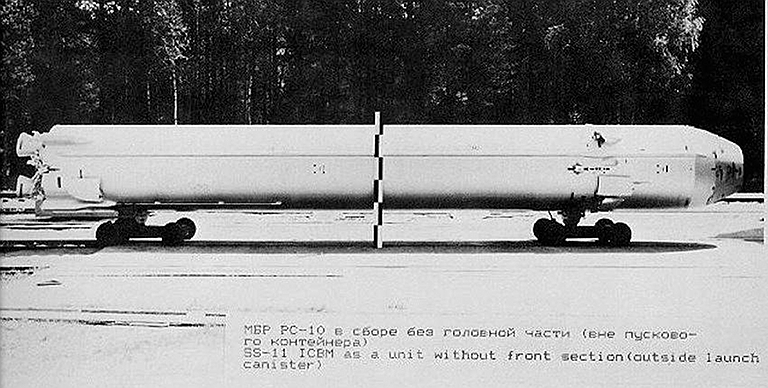 The UR-100 began flight testing in 1965, a year ahead of the RT-2. Nearly 1,000 of these weapons would eventually be deployed, providing the Soviet Union with a legitimate counter to the American Minuteman missile force. Three improved variants were fielded. The UR-100M added improvements to the guidance systems. The UR-100K and UR-100U began to replace deployed UR-100 missiles in the mid 1970's. The chief improvements were in the propulsion and guidance systems, with the UR-100U adding a three warhead MRV assembly to the nose of the missile. UR-100 Specifications Type: two-stage ICBM; storable AT/UDMH propellants Launched from: OS-series silo Maximum range: 11,000 km (UR-100), 12,000 km (UR-100K/U) CEP: 1.4 km (UR-100), 900 m (UR-100K/U) Payload: 1 x 1.1 megaton RV (UR-100), 1 x 1.3 megaton RV (UR-100K), 3 x 350 kiloton RVs (UR-100U) Number deployed: 950 (UR-100/M, 1966-1986), 420 (UR-100K/U, 1971-1994) 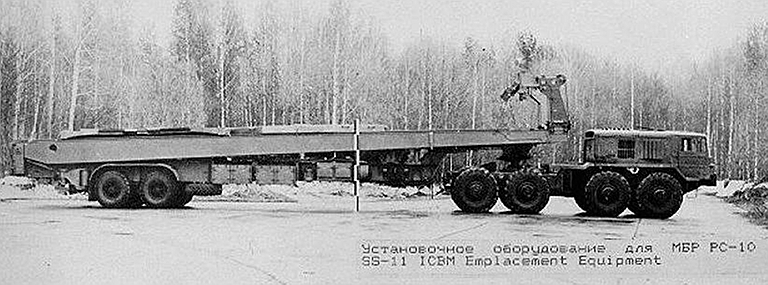 The RT-2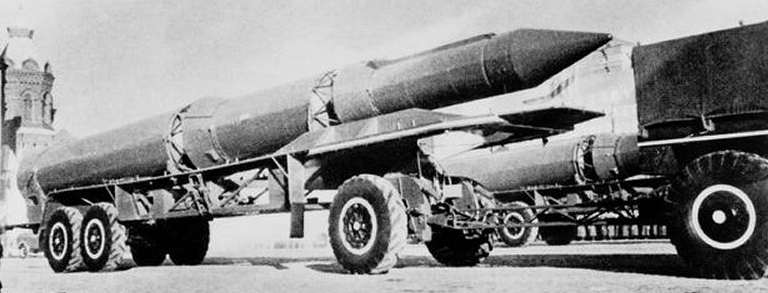 Korolev's RT-2 would prove to be his last operational ICBM design. The missile began flight testing in 1966, and entered service in 1968. The delays associated with the program, coupled with the fact that Chelomey's UR-100 provided the Kremlin's desired lightweight ICBM at a fraction of the cost, resulted in only a token number of these first Soviet solid fueled ICBMs being fielded. An improved variant, the RT-2P, was developed and deployed to replace the original RT-2 missiles, beginning in 1972. An IRBM offshoot of the RT-2, designated the RT-25, was briefly considered in the early 1960s but was not proceeded with. RT-2 Specifications Type: three stage ICBM Launched from: OS-series silo Maximum range: 9400 km (RT-2), 9500 km (RT-2P) CEP: 1.9 km (RT-2), 1.5 km (RT-2P) Payload: 1 x 750 kiloton RV Number deployed: 60 (1971-1993) 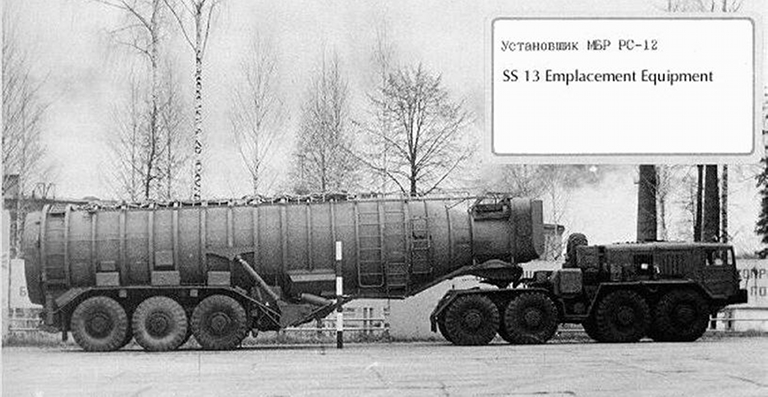 The R-36-O Yangel's FOBS variant of the R-36 began testing in 1965, and was placed into operational service in 1968. A single unit would be equipped with the R-36-O, and it was located on the grounds of the Baikonur test range. 18 silos were constructed and were controlled by four separate launch control facilities. A nuclear weapons storage site was also constructed to house the warheads for these weapons. The layout of the Baikonur R-36-O deployment can be seen in the image below: 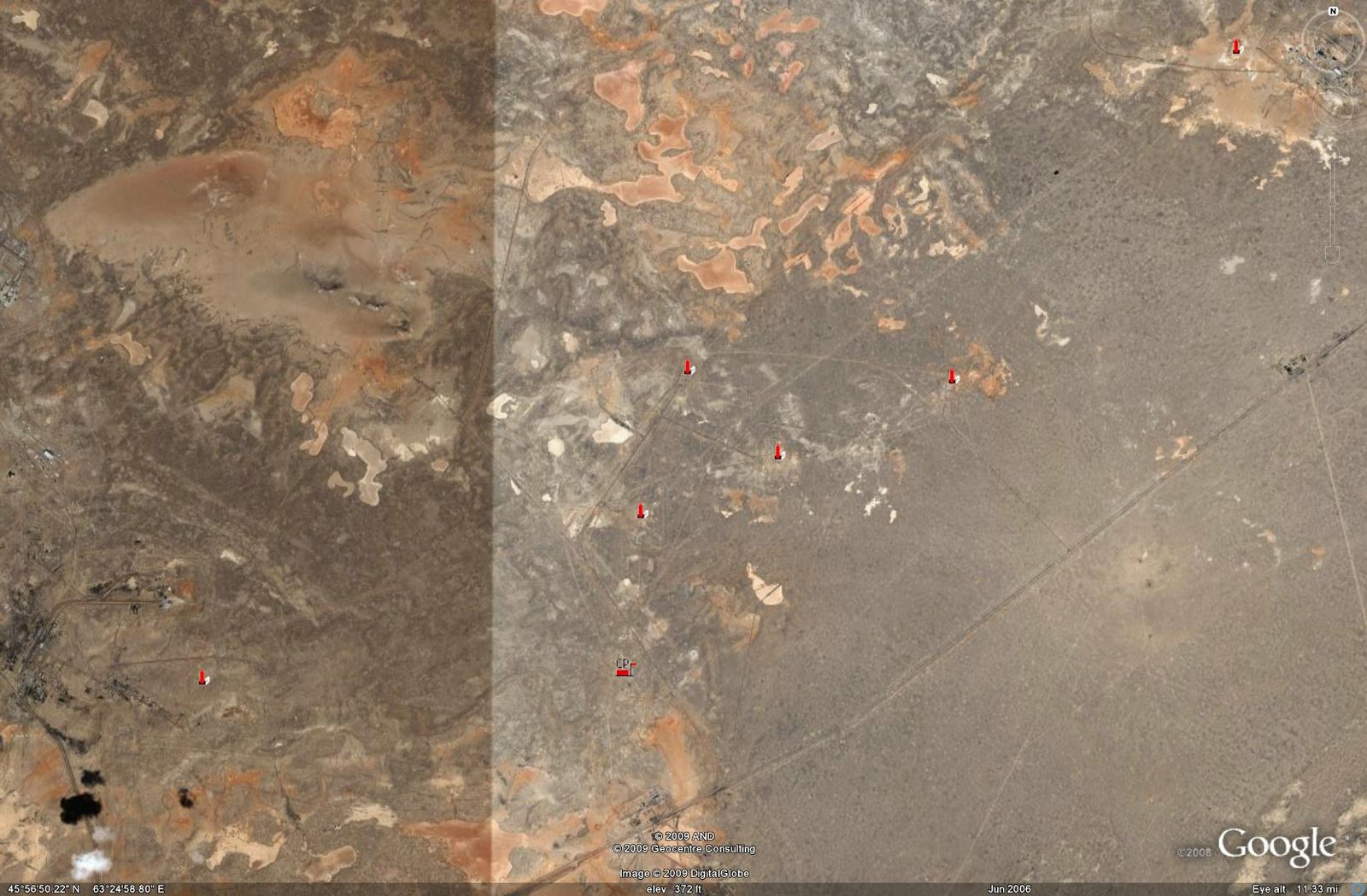 R-36-O Specifications R-36-O SpecificationsType: two stage FOBS; storable AT/UDMH propellants Launched from: OS-series silo Maximum range: global CEP: 1.1 km Payload: 1 x 5 megaton RV Number deployed: 18 (1969-1982) Unbuilt Mega-ICBMsOf the four types of ICBMs proposed in 1962, only one did not enter service. The Soviet government desired a massive ICBM with a throw weight in the range of thirty tons. Such a throw weight would allow the largets Soviet thermonuclear weapons to be lofted by ICBMs, and the largest of these weapons had a projected yield of 150 megatons - this weapons technology was tested in air dropped form as the Tsar-bomba, using a modified Tu-95K Bear bomber. Such a weapon would not be capable of merely destroying cities or military facilities, but entire geographical regions. The three designs considered were variants of Korolev's N-1 space launch vehicle, Chelomey's UR-500, and Yangel's R-46. The latter design was abandoned fairly quickly, as the Soviet government wanted Yangel to concentrate on the R-36. Korolev's N-1 design failed most likely because the vehicle itself was a total failure as a space launch vehicle, although various military versions of the N-1 were proposed during the course of its development. That left Chelomey's UR-500. While this weapon was never operationally deployed, it was flight tested for a short period, and when the requirement was officially dropped in 1965, the UR-500 was refined to become the Proton space launch vehicle. |
||
Soviet ICBM ParityThe next generation of Soviet ICBMs would follow a similar deployment strategy as the previous generation. Heavy and light ICBMs to replace the R-36 and UR-100 were desired. The development of mobile ICBMs was given serious attention as well, and these weapons will be described separately. The desire for a UR-100 replacement resulted in the development of two competing designs, which would eventually supplement each other in service. These were Chelomey's upgraded UR-100N and Yangel's MR-UR-100. The main requirement for these weapons apart from the expected imrovements in reliability and accuracy, was the ability to fit inside existing UR-100 silos. The MR-UR-100 was successful in this regard, while the UR-100N was not, requiring a new silo to be designed to house this ICBM. As with many previous programs, both of these weapons would be put into service. The heavy ICBM requirement was implemented in the form of the Yangel R-36M, an evolution of the existing R-36. These weapons introduced many new features not previously found in Soviet ICBMs. The two most significant were the inclusion of a cold launch capability for the MR-UR-100 and MIRV warheads. The cold launch method involved ejecting the missile from the silo by using compressed gas and firing the first stage booster at a set altitude above the ground. This would allow silos to be repaired and refurbished following an ICBM launch, potentially enabling them to be reloaded. This enables operational silos to be used for training and test launches, as well as providing them with the capability to be rearmed following a nuclear exchange in the event that sufficient numbers of stored weapons remained viable. MIRV warheads allowed a single Soviet ICBM to target geographically separated targets for the first time. This enabled the RVSN's potential target list to increase significantly, possibly helping to increase the deterrent ability of the force. These technological advances finally allowed the RVSN to achieve both numerical and qualitative parity with the American ICBM force. Mature technology finally eliminated the lengthy preparation times often associated with earlier missiles as well, allowing launches to take place in minutes or seconds after receipt of authorized orders. The R-36M The R-36M was an evolution of the original Soviet heavy ICBM, the R-36. Development began in 1969, with the first test launch occurring in 1973. The initial R-36M variant entered operational service in 1974. This weapon was available in two configurations, a single warhead missile and a missile with 8 MIRVs each of 550 kiloton yield. These initial weapons were replaced between 1979 and 1980 by the improved R-36MUTTH. This weapon introduced lighter weight MIRV warheads, allowing for both an increase in range and an increase in payload, from 8 to 10 MIRVs. The final example of the R-36M series was the R-36M2, which entered service in 1988 in both single warhead and MIRV'ed configurations. The latter configuration employed 10 MIRVs. R-36M Specifications Type: two stage ICBM; storable AT/UDMH propellants Launched from: OS-series silos Maximum range: 10,200 to 16,000 km, depending on variant CEP: 500 to 920 m, depending on variant Payload: various, including 10 MIRV Number deployed: 308 (1974-present) 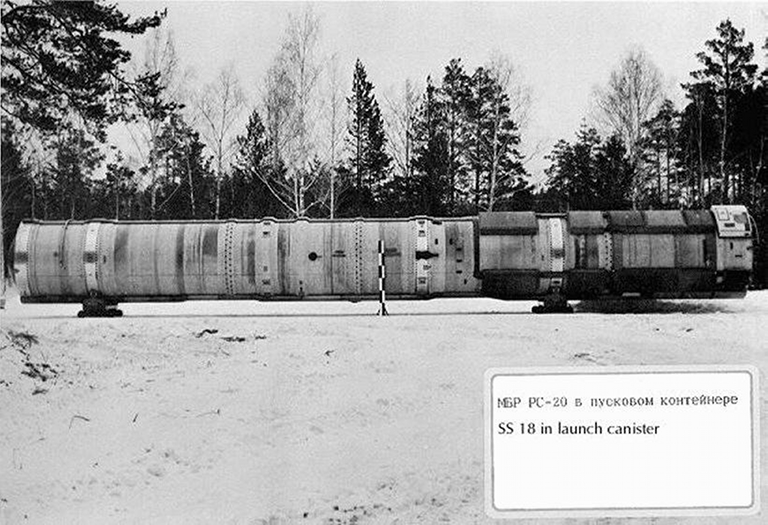 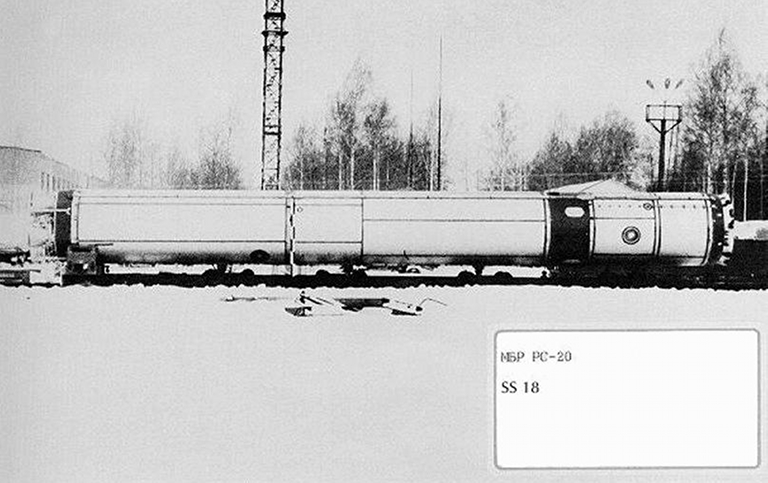 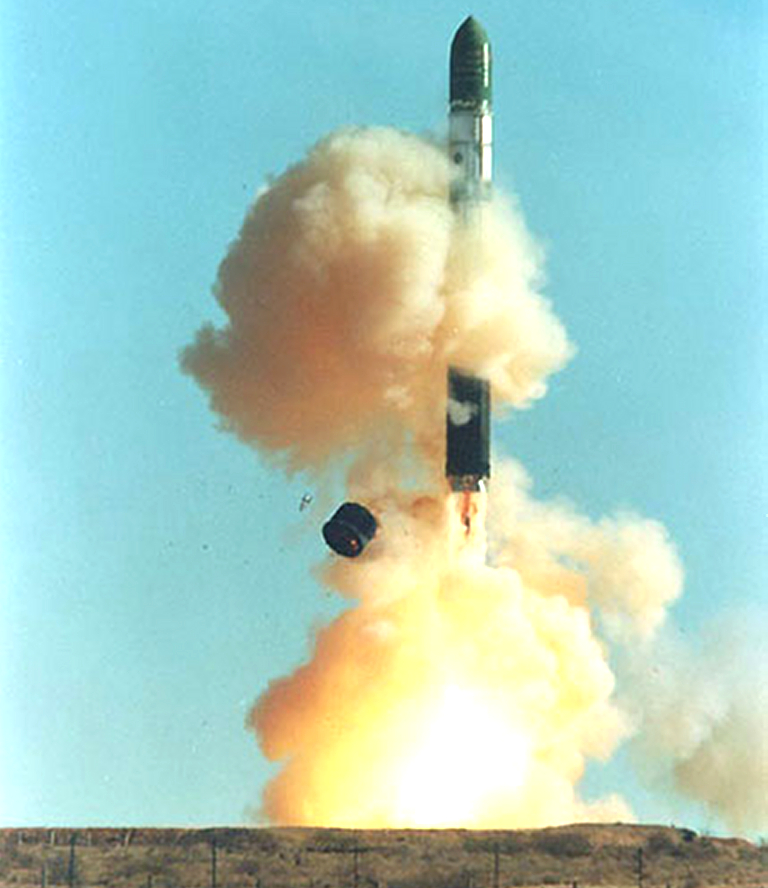 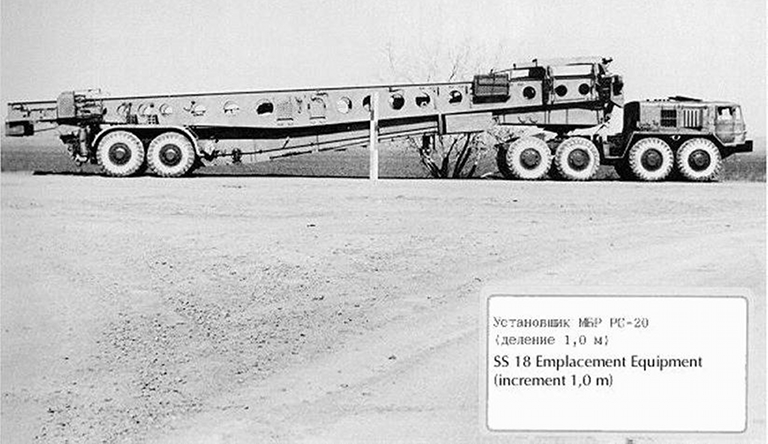 The MR-UR-100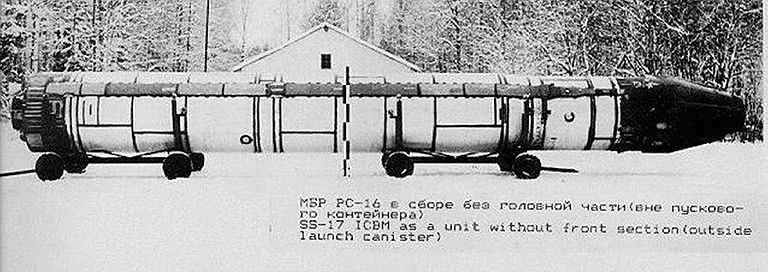 Yangel's MR-UR-100 was fielded in concert with Chelomey's UR-100N to replace the UR-100 force as the USSR's lightweight ICBM. Development began in 1970 and flight testing commenced in late 1972. Deployed in both single warhead and MIRV'ed models with three warheads, the first examples entered the operational inventory in 1975. An enhanced version with improved guidance systems providing greater accuracy and an increased payload of 4 MIRVs (550 kiloton yield), the MR-UR-100UTTH, was introduced in 1978. This weapon replaced all of the MR-UR-100s by 1983. One variant of the MR-UR-100 was employed by the Perimeter command system. Perimeter launched ICBMs carrying systems designed to transmit launch orders to the RVSN's ICBM force in the event that the national leadership was eliminated through a preemptive strike. As the MR-UR-100 is no longer operationally deployed, it is likely that a newer weapon such as the Topol is now employed by the Perimeter system. Perimeter-configured ICBMs did not carry warheads but were solely tasked with the command and control mission. MR-UR-100 Specifications Type: two stage ICBM; storable AT/UDMH propellants Launched from: OS-series silos Maximum range: 10,320 km CEP: 920 m Payload: various, including 4 MIRV Number deployed: 150 (1975-1994) 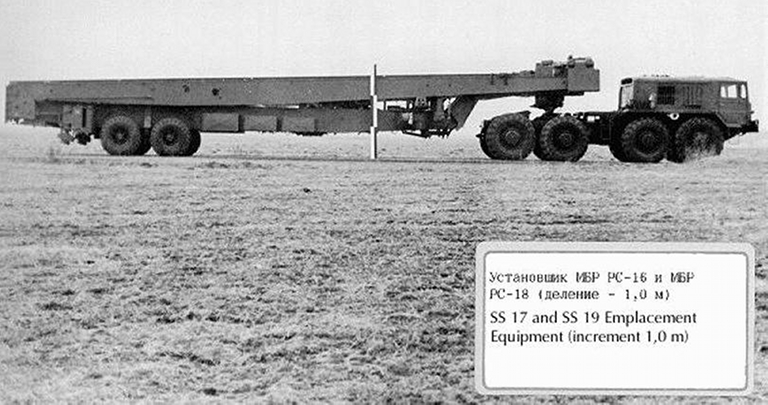 The SS-17 and SS-19 used a common
Transporter/Loader, towed by the ubiquitous MAZ-537 tractor.
The UR-100N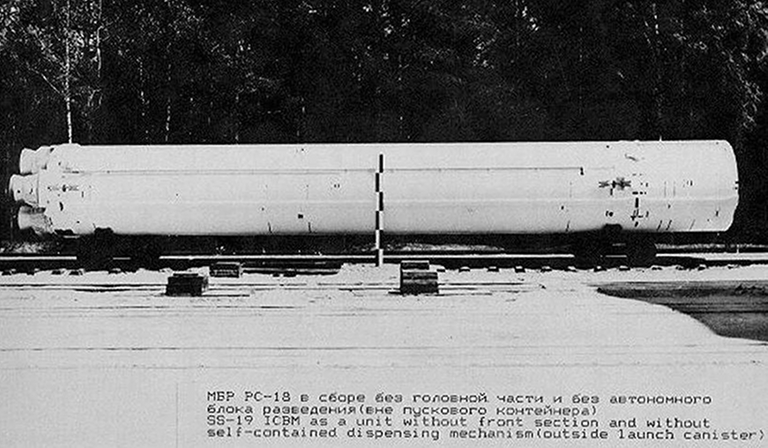 The UR-100N would be the last of Chelomey's ICBM designs to enter operational service. Development began in the early 1970's with the first operational missiles being fielded in 1975. Two configurations were fielded, a single warhead variant and a variant with 6 x 550 kiloton MIRVs. Improvements to the guidance systems of the weapon resulted in the enhanced UR-100NUTTH being fielded in 1979. These weapons replaced the deployed UR-100N ICBMs between 1980 and 1983. UR-100N Specifications Type: two stage ICBM; storable AT/UDMH propellants Launched from: OS-series silos Maximum range: 10,000 km CEP: 920 m Payload: various, including 6 MIRV Number deployed: 360 (1974-present) |
||
Enhancing ICBM Survivability - Mobile ICBMsSoviet efforts to develop mobile ICBMs began as far back as the early 1960's. The first project was the Gnom system, a unique ICBM design relying on a ramjet-powered air breathing engine for its first stage. This interesting concept did not proceed to full-scale flight tests. The next program began in 1964, when Yangel started work on the RT-20. The RT-20 was an abject failure due to a number of deficiencies. Initially conceived as a silo-based, road mobile, and rail-based weapon system, the RT-20 was only tested in its road-mobile form. Testing began in 1967 at Plesetsk, but problems with both the missile and the cumbersome tracked TEL led to its cancellation in 1969. It would not be until the Moscow Institute of Thermal Technology (MITT) entered the ICBM game that mobile ICBM designs began to emerge as viable weapon systems. Even then, the development of these survivable ICBMs would initially remain troubled throughout the 1970s. The Temp-2SMITT's first ICBM design was the Temp-2S, the first Soviet operational road mobile ICBM. Development began in 1969, with the flight test program at Plesetsk beginning in 1972. The Temp-2S adopted a wheeled TEL design due to the glaring inadequacies of tracked vehicles discovered in Yangel's RT-20 program. Problems with the missile and the TEL design led to the program being severely curtailed, and only a token force was deployed at Plesetsk beginning in 1976. In a sense, the Temp-2S was the mobile equivalent of the R-7. The Temp-2S was an arms control nightmare for various reasons. First, American negotiators during SALT II talks were against the deployment of mobile ICBMs as they could not be reliably accounted for using then-current verification techniques, most prominently overhead imagery. Second, the Pioner IRBM (SS-20) had been developed using the first and second stages of the Temp-2S missile. The Pioner was an arms control issue in its own right, and analysts were concerned that the Pioner could be mated to stored Temp-2S third stages to convert them into ICBMs. Soviet negotiators eventually relented and agreed that the Temp-2S would be abandoned and that its third stage would not be produced and stockpiled. Nevertheless, concealment efforts were developed to mask the deployment of the token Temp-2S force. Temp-2S Specifications Type: three stage ICBM Launched from: TEL Maximum range: 9,000 km CEP: 450 m Payload: 1 x 0.65-1.5 megaton RV Number deployed: 60 (1976-1985) The RT-2PM Topol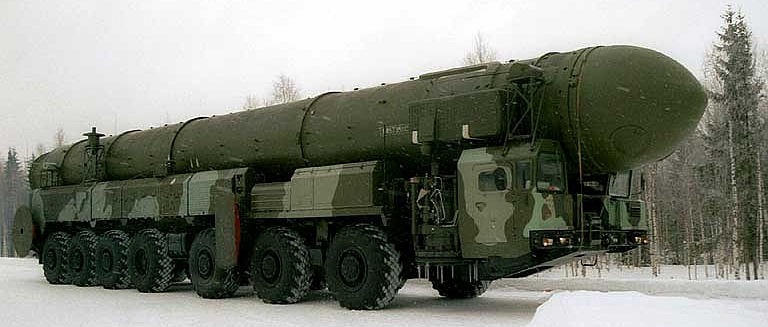 In 1977 MITT began development of the first Soviet road mobile ICBM to enter significant operational service, the RT-2PM. Due to the prior conflict over the Temp-2S and the fact that the SALT II treaty only authorized the development of a single new ICBM type, this was the RT-23, which is described later, the missile was given a designation which seemed to indicate that it was a follow-on design based on the Korolev RT-2. Developing modified variants of existing missiles was permitted under arms control agreements provided that they did not exceed a certain throw weight. In actuality, the RT-2PM was a follow on to the Temp-2S design. Flight testing at Plesetsk began in 1983, with the first operational missiles becoming available in 1985. On at least one occasion a variant with 4 MIRVs was tested, but this configuration was not deployed due to arms control reasons limiting the number of MIRV'ed ICBMs. RT-2PM Specifications Type: three stage ICBM Launched from: TEL Maximum range: 10,500 km CEP: 200 m Payload: 1 x 550 kiloton RV Number deployed: 369 (1984-present) 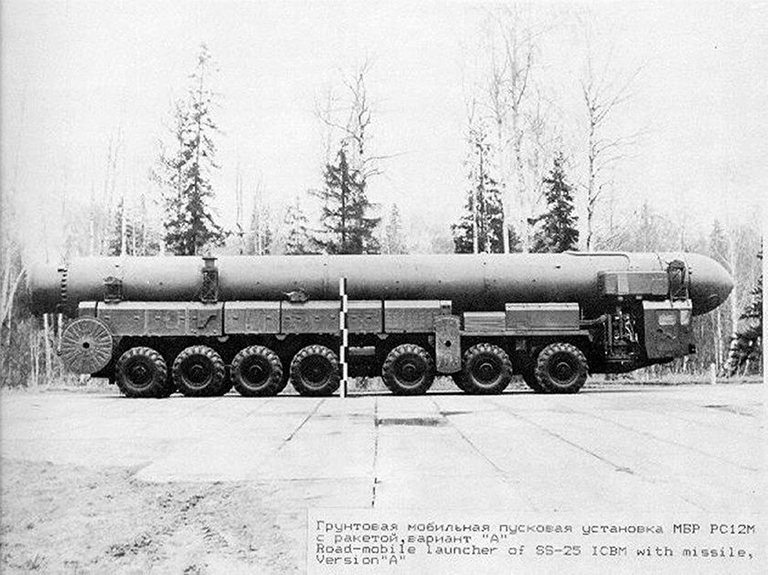 Two
TEL
variants
exist
for
the RT-2PM Sickle, Versions A and B.
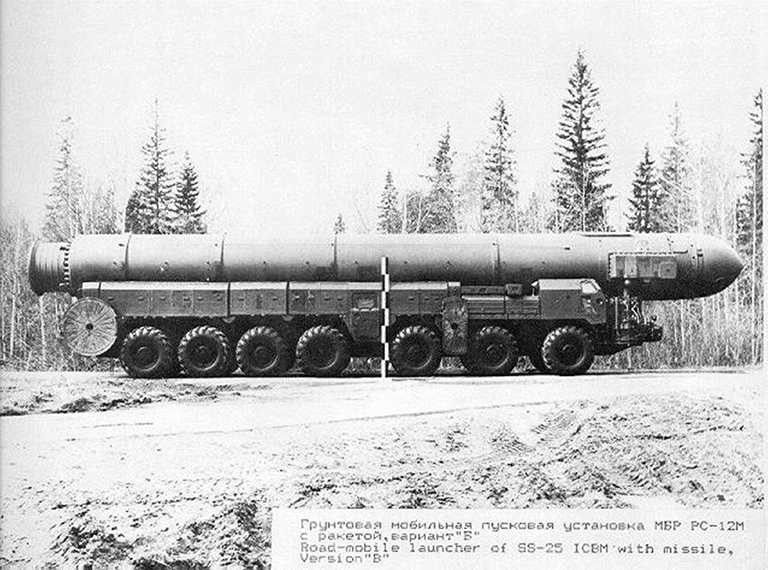 The RT-23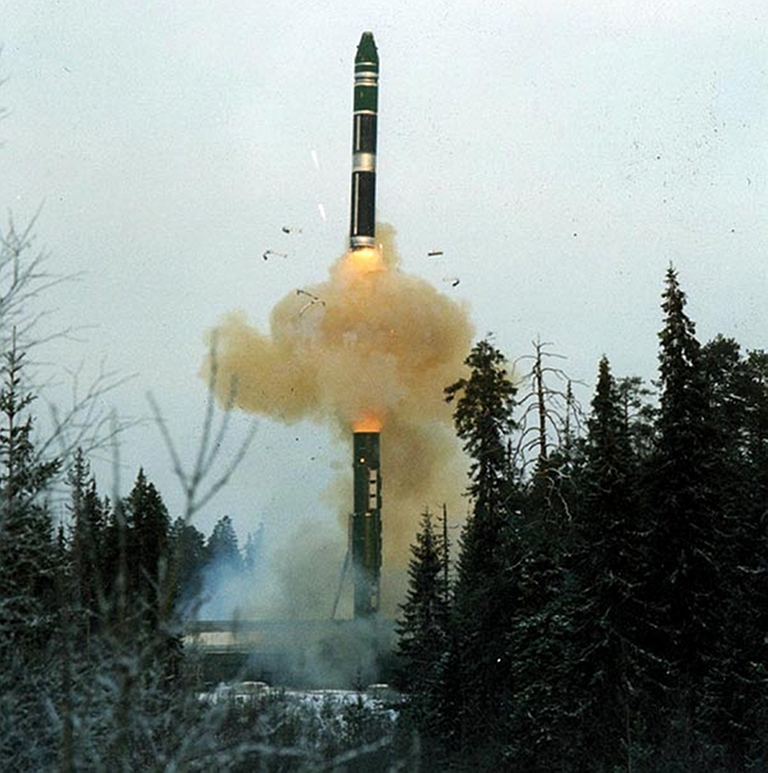 Yangel's rail-based RT-23 began development as far back as 1969, but did not reach testing until 1982. The continued debate internally and in the arms control arena over mobile ICBMs led to the inclusion of silo basing for the new weapon in 1976 and contributed to the protracted development period. Multiple failures of missiles during testing led to the development of the improved RT-23UTTH, which was fielded in 1989, although a limited number of rail-based RT-23s were deployed in 1987. Silo-based weapons replaced UR-100NUTTH missiles on a limited scale, with rail-based weapons being located at three garrisons. A road mobile version was considered during the 1980s but was abandoned due to problems with the TEL design necessary for employing a weapon the size of the RT-23. RT-23 Specifications Type: two stage ICBM Launched from: OS-series silo or railcar Maximum range: 10,450 km CEP: 500 m Payload: 10 x 550 kiloton MIRVs Number deployed: 92 (1986-2005)
Railcar
TEL
deployment.
|
||
Post-Cold War CasualtiesThe end of the Cold War and the breakup of the USSR, which resulted in the Yangel design bureau belonging to the Ukraine, led to the cancellation of a new generation of ICBMs. These were the Yangel Ikar, a follow-on to the R-36 and R-36M, MITT's Kuryer lightweight mobile ICBM, analogous to the former American Midgetman program, and the NPO Mash Albatross, an ICBM design conceived by the design bureau once headed by Chelomey. While Albatross and Ikar did not enter testing, the Kuryer was trialled in 1992 but abandoned shortly thereafter. |
||
Current Operational SystemsThe current missile systems being developed and deployed for use by the RVSN are MITT's RT-2PM2 and RS-24. Both of these weapons are evolutions of the RT-2PM. The appearance of the MIRV'ed RS-24 caused consternation in the West as the START agreements prohibit single-warhead ICBMs from being produced in MIRV'ed variants. In an apparent throwback to classic Soviet deception practices related to MITT-produced ICBMs, the new weapon was labeled the RS-24. Given that the treaty name for the RT-2PM was RS-12M, perhaps RS-36 would have been a more ironic choice. Nevertheless, examination of the RS-24 as compared to the RT-2PM2 provided concrete evidence of the weapon's true lineage. The RT-2PM2 Topol-M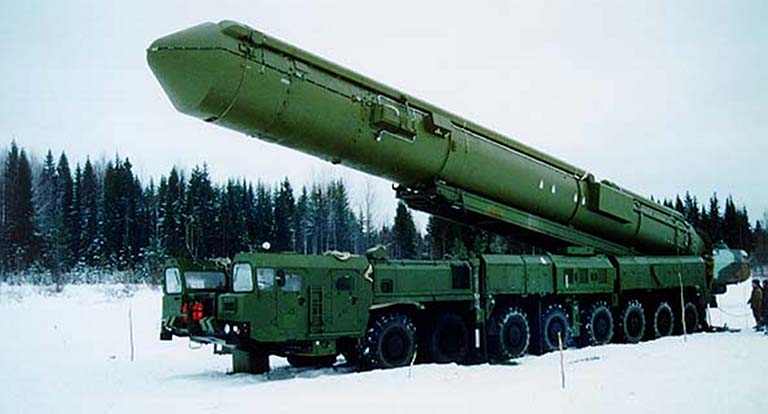 The RT-2PM2 was conceived as the replacement for the RT-2PM. It was designed to be deployed in both a silo and mobile version, allowing the RVSN to not only replace the RT-2PM as these weapons reached the end of their 15 year service lives but to replace silo based weapons as well. The single warhead missile had an increased throw weight over the RT-2PM but the warhead's yield did not increase. The increase in throw weight from 1,000 to 1,200 kg was likely intended to increase the survivability of the warhead through the use of increased and more advanced penetration aids and the future incorporation of a maneuvering RV (MaRV) designed to counter ABM defenses. Testing began in 1994 at Plesetsk and the first missiles were placed in silos at Tatischevo in 1997. The first mobile RT-2PM2 ICBMs became operational in 2006 at Teykovo. RT-2PM2 Specifications Type: three stage ICBM Launched from: OS-series silos, TELs Maximum range: 10,500 km CEP: 350 m Payload: 1 x 550 kiloton RV Number deployed: 65 (1997-present) 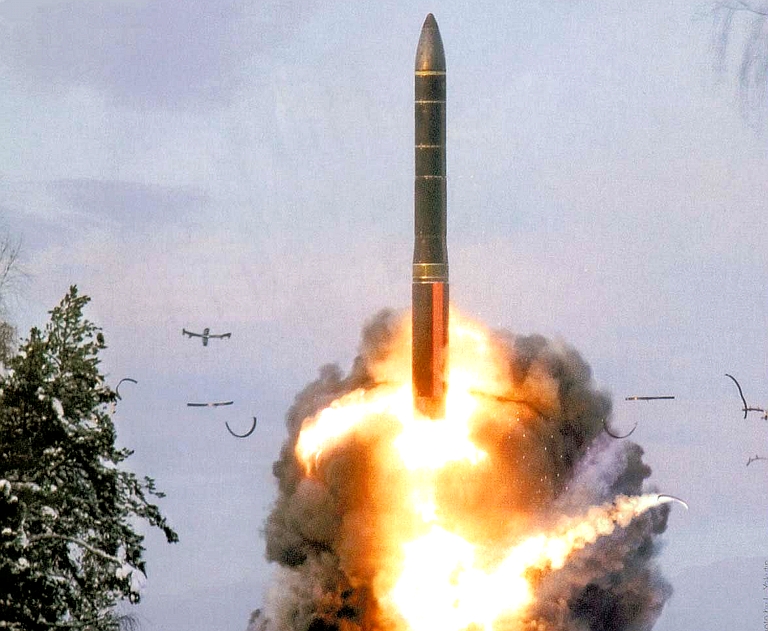 The RS-24The RS-24 is a new ICBM currently undergoing testing from Plesetsk, the first launch occurring in 2007. The RS-24 will be deployed in both silo-based and road mobile versions, with the road mobile variant currently being tested with the aim of deploying the first operational examples in late 2009 at Teykovo, likely supplementing the RT-2PM2 and replacing the remaining RT-2PM units. The silo-based variant has yet to begin testing. The rapid move from testing to operational deployment also serves to reinforce the fact that the RS-24 is merely a MIRV'ed RT-2PM2. Data from MIRV'ed RT-2PM trials may also be contributing to the test program. RS-24 Specifications Type: three stage ICBM Launched from: TEL (may be silo based in the future) Maximum range: Unknown CEP: Unknown Payload: 3 MIRVs of unknown yield Number deployed: None (in development) |
||
RVSN Deployment StrategiesSoviet
ICBM deployment strategies evolved as more mature and capable missile
systems were inducted into operational service. Initially, the limited
range of the R-7 meant that it had to be deployed in northern Russia to
allow it to reach targets on American soil. Advances and refinements in
propulsion technology increased the reach of the Soviet ICBMs, allowing
them to be based throughout Russia in far more protected and accessible
regions. One of the disadvantages of the R-7 was that the basing at
Plesetsk was in a very inhospitable area, making the missiles more
difficult to service and potentially having a negative impact on their
reliability and readiness.
As the Soviet ICBM force became
more widely deployed, attention began to be paid to survivability,
resulting in the first series of silo-based ICBMs being deployed. The
survivability of the force as a whole did increase, but individual
regiments were not necessarily protected to a great degree, due to the
use of the three-silo launch complexes detailed above. As silo
technology was refined, ICBMs were deployed in individual silos with
increasing hardness to allow them to survive nuclear detonations within
a certain proximity. The more hardened the silos, the smaller the
distance between them in the missile fields. R-36 silos at Zhangistobe,
for example, were usually around 10 kilometers apart. Later UR-100N
silos at Tatischevo were spaced around 6 kilometers apart. The end
result was the widely dispersed missile fields seen today, providing
the RVSN with a widely dispersed and survivable missile force. The
incorporation of mobile ICBMs into the RVSN only served to increase the
survivability of the force by allowing them to deploy and launch from
anywhere within their operating range from their garrisons.
|
||
Current RVSN Force StructureAs
it exists today, the RVSN comprises three missile armies, all based
inside the Russian Federation. These units are the 27th
Guards, 31st, and 33rd
Guards missile armies. RVSN headquarters is located on the southwestern
edge of Moscow, with an alternate hardened wartime command post located
inside of Kosvinsky Mountain in the Urals. Eleven missile divisions
make up the three missile armies, with seven mobile ICBM divisions and
four silo-based ICBM divisions.
The locations of the current RVSN units can be seen in the image below. Silo-based and mobile ICBM units are denoted with different icons.
The
locations
of
former ICBM bases can be seen in the image below.
Locations which are currently equipped with different missile types
than indicated are identified by smaller icons and smaller text. For
example, Teykovo is a current mobile ICBM base, so its past status as a
silo-based ICBM location is noted here. Note that Omsk stands out as
the sole location to have only been home to pad-launched ICBMs.
|
||
Important RVSN Support FacilitiesA discussion of Soviet and
Russian ICBM development and deployment would not be complete without
an overview of the major facilities involved in the design, testing,
and support of these systems.
Three major test facilities have been home to Soviet and Russian ICBM development programs since the creation of the Korolev R-7. These facilities are Kapustin Yar and Plesetsk in Russia, and Baikonur in Kazakhstan. Kapustin Yar saw the initial steps taken in the development of Russian ballistic missiles when it served as the testing ground for captured German V-2 rockets after the Second World War. While it did not as extensive a role in continued ICBM testing as the other two locations, it is historically significant nonetheless and did serve as a launching point for the R-16 and RT-2. Baikonur was the test ground for the first Soviet ICBM and home to the bulk of the Soviet space program. It was host to a plethora of Soviet ICBM trials programs, as well as the FOBS deployment area. While ICBM developmental testing has been largely restricted to Plesetsk in recent years, Baikonur still plays a significant role in the Russian space program. A general layout of all ICBM-related test and operational deployment locations at Baikonur can be seen in the image below:  The
test
pad
from
which
the
R-7
made
the Soviet Union's first ICBM test
flight can be seen in the image below: The
test
pad
from
which
the
R-7
made
the Soviet Union's first ICBM test
flight can be seen in the image below: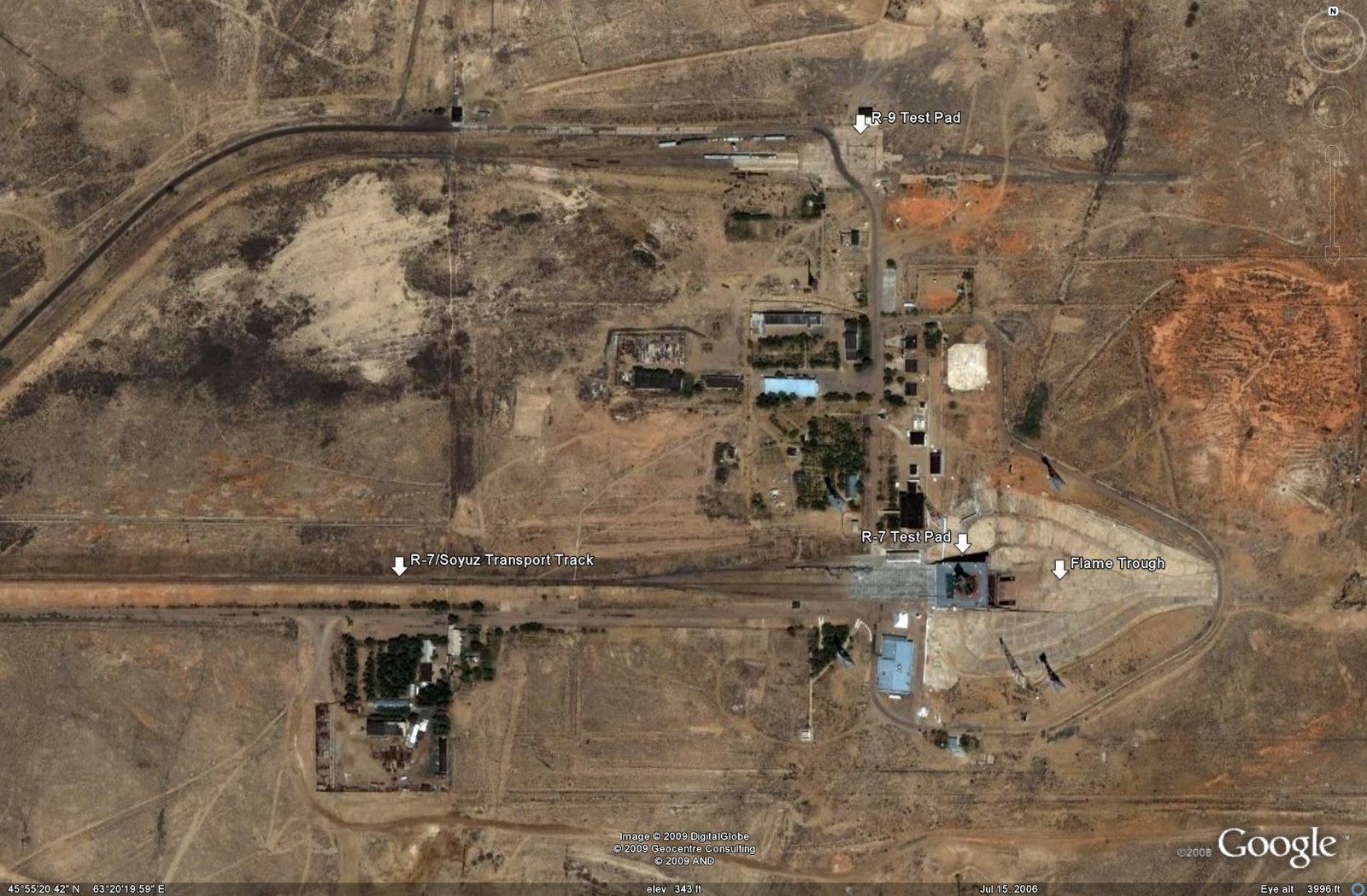 Plesetsk
initially
served
as the home to the operational R-7 ICBM force, but
eventually evolved into a significant ICBM test facility. The bulk of
the development of Soviet and Russian mobile ICBMs took place at
Plesetsk, and it has also become a significant space launch facility.
Current ICBM activity includes RS-24 test firings.
An overview of the major ICBM-related test facilities at Plesetsk can be seen in the image below: 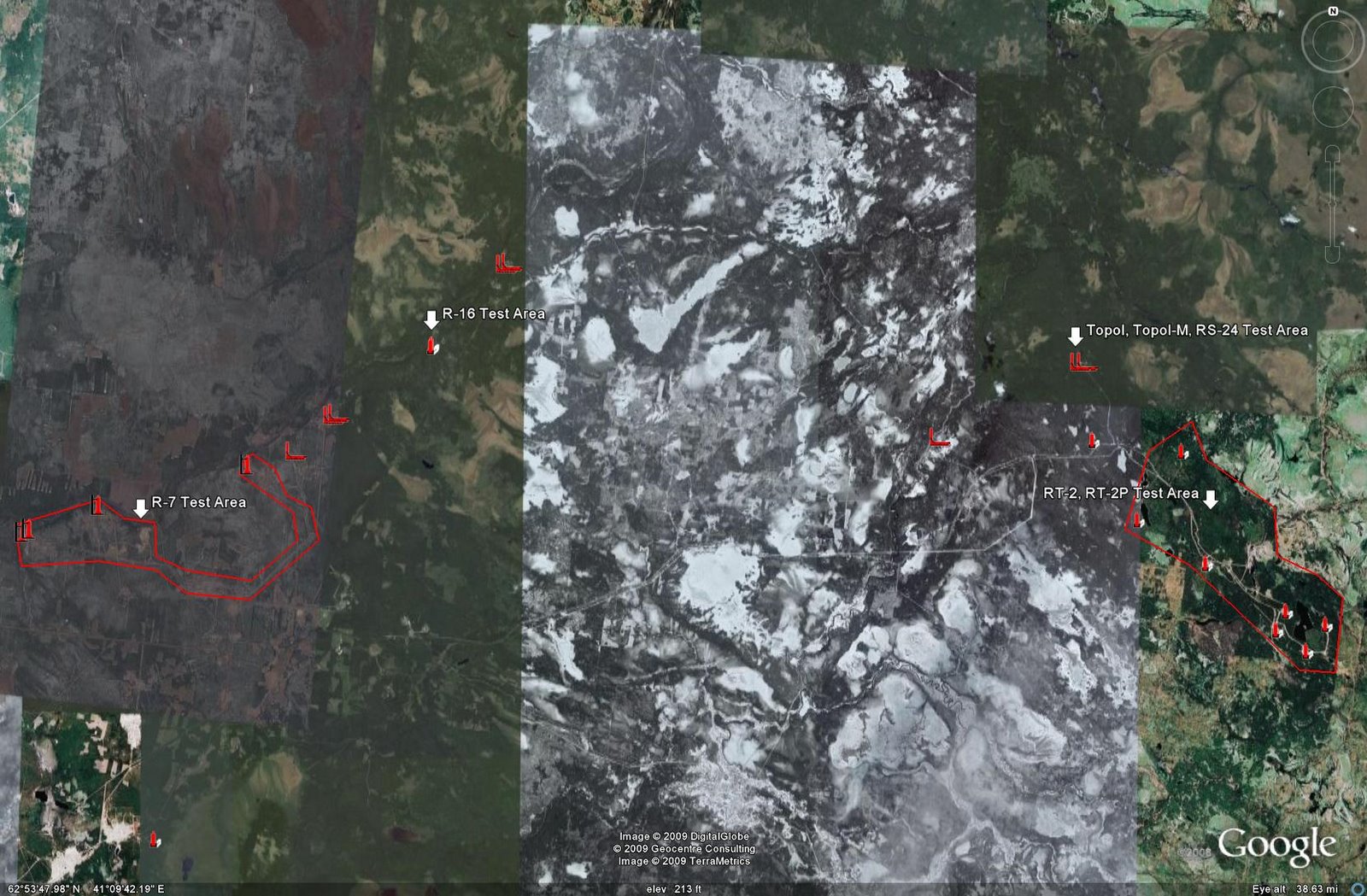 The Kura Impact Range, located on the Kamchatka peninsula, provides a secure range where long-distance Soviet and Russian ICBM tests terminated. Various telemetry stations are present, including the RSN-225 radar formerly associated with the S-225 mobile ABM system. This radar is used to track inbound ICBMs, and caused a minor uproar when it was deployed as it was recognized by American intelligence as an ABM-related asset. While some ICBM tests do terminate in the Pacific Ocean on maximum range test flights, the Kura range is a significant asset as it provides a wealth of performance and telemetry data during the reentry phase of flight. Having an RV impact on land also means that any onboard telemetry equipment may be recovered with greater ease than if the RV impacted at sea. An overview of the Kura Impact Range can be seen in the image below:  The
four
major
design bureaus associated with developing the Soviet and
Russian ICBM force were Korolev, Yangel, MITT, and Chelomey. Chelomey's
design bureau is currently known as NPO Mash. The breakup of the Soviet
Union meant that half of the then-active ICBM development and
production force was left in the Ukraine, effectively leaving MITT to
develop the next generation of Russian ICBMs. Many component
manufacturers were left in former Soviet republics as well, and this
caused numerous problems as missiles began to need maintenance during
the course of their post-Soviet service lives.
The locations of Korolev's design bureau, MITT, and NPO Mash can be seen in the image below: 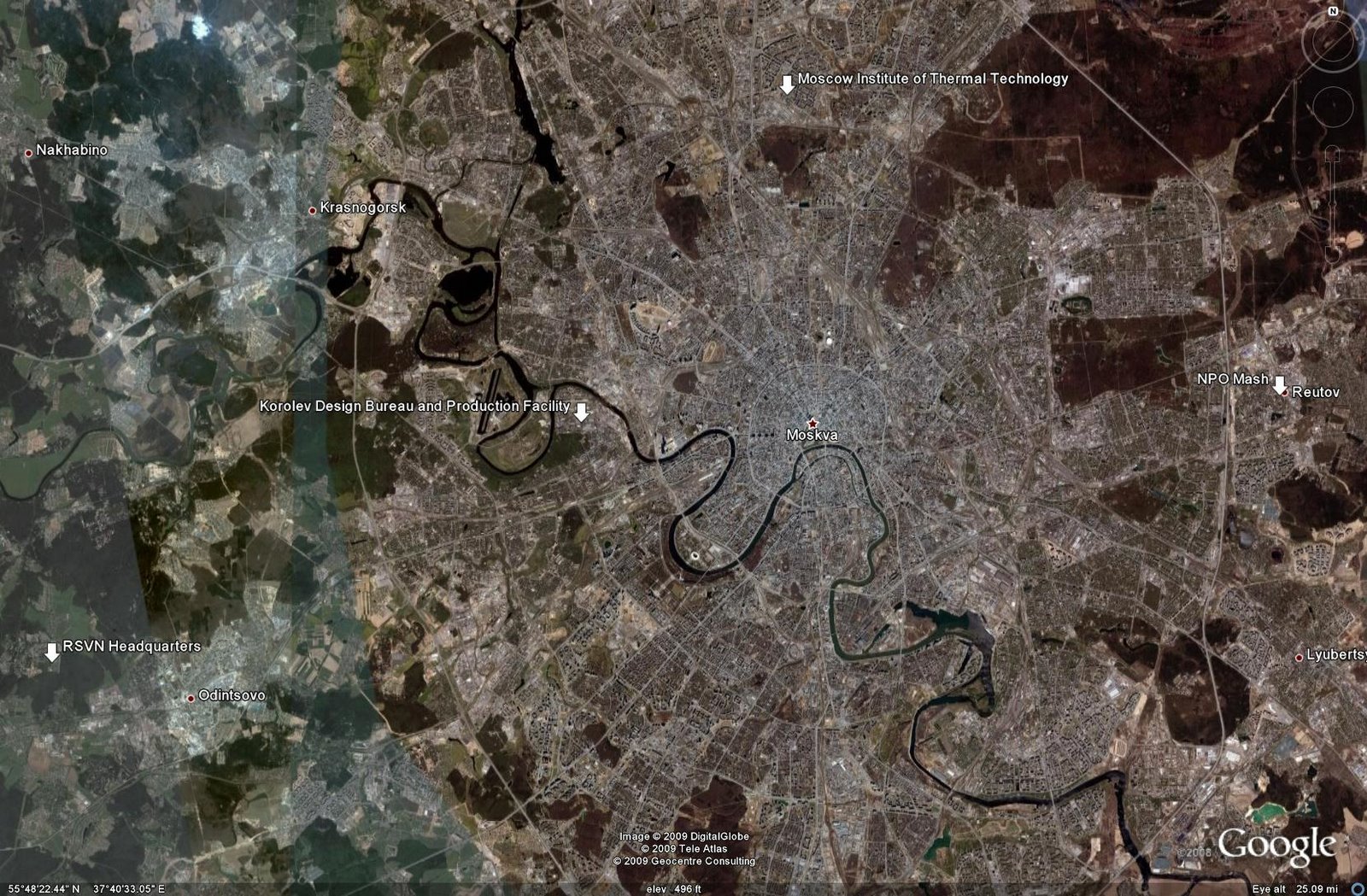 The locations of Yangel's design bureau and associated production facility in the Ukraine can be seen in the image below: 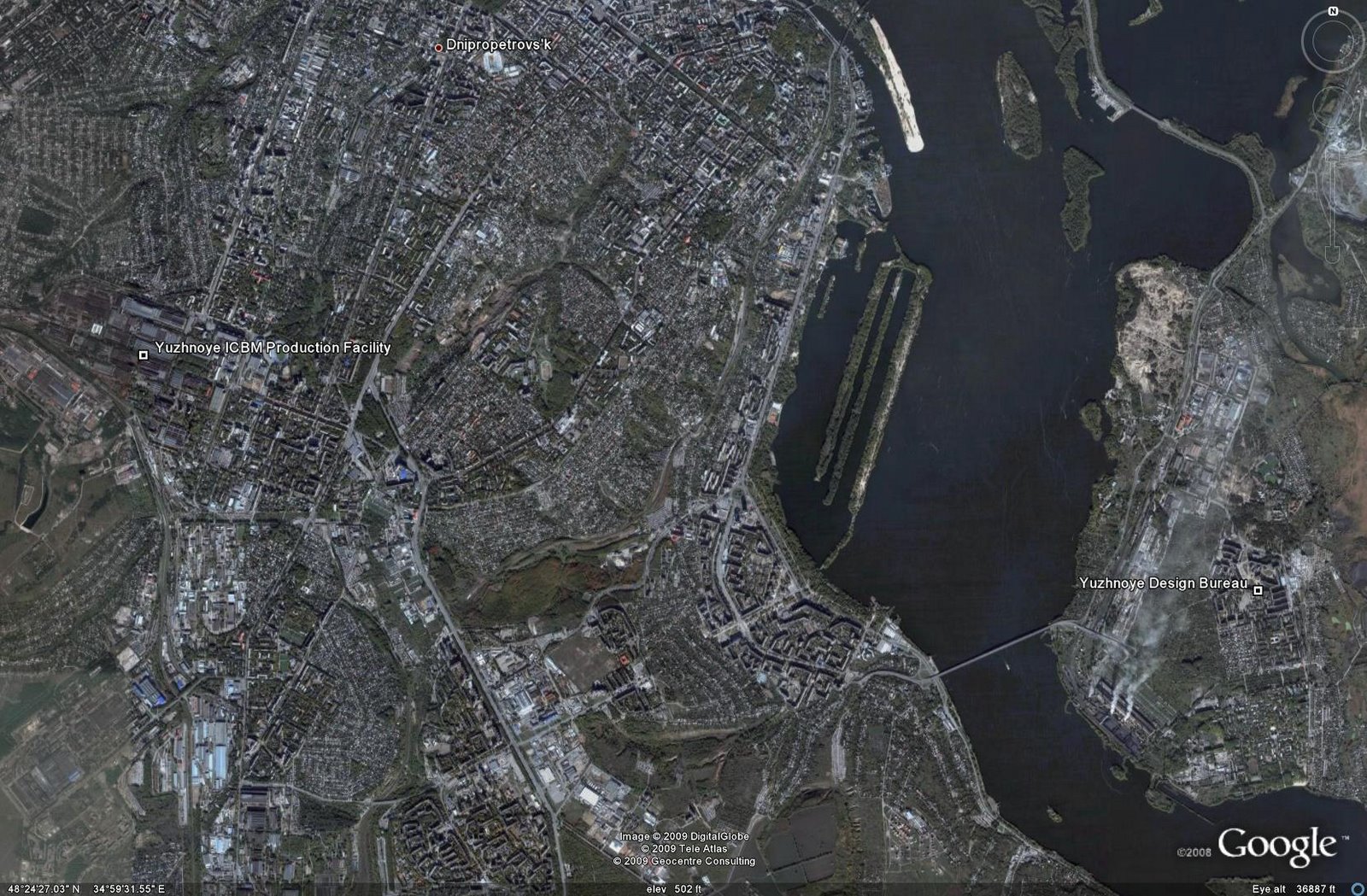 Five
major
ICBM
storage sites maintained the missiles not operationally
deployed by the RVSN. Two of these were located outside of Russia as
mentioned previously, with the remaining three facilities located near
Nizhny Novgorod, Glazov, and Yekaterinburg. A typical ICBM storage
facility consisted primarily of ICBM storage halls, a missile transport
railcar garrison serving the trains used to transport ICBMs throughout
Russia, and a rail transfer point for onloading and offloading railcars.
A typical Russian ICBM storage site can be seen in the image below: 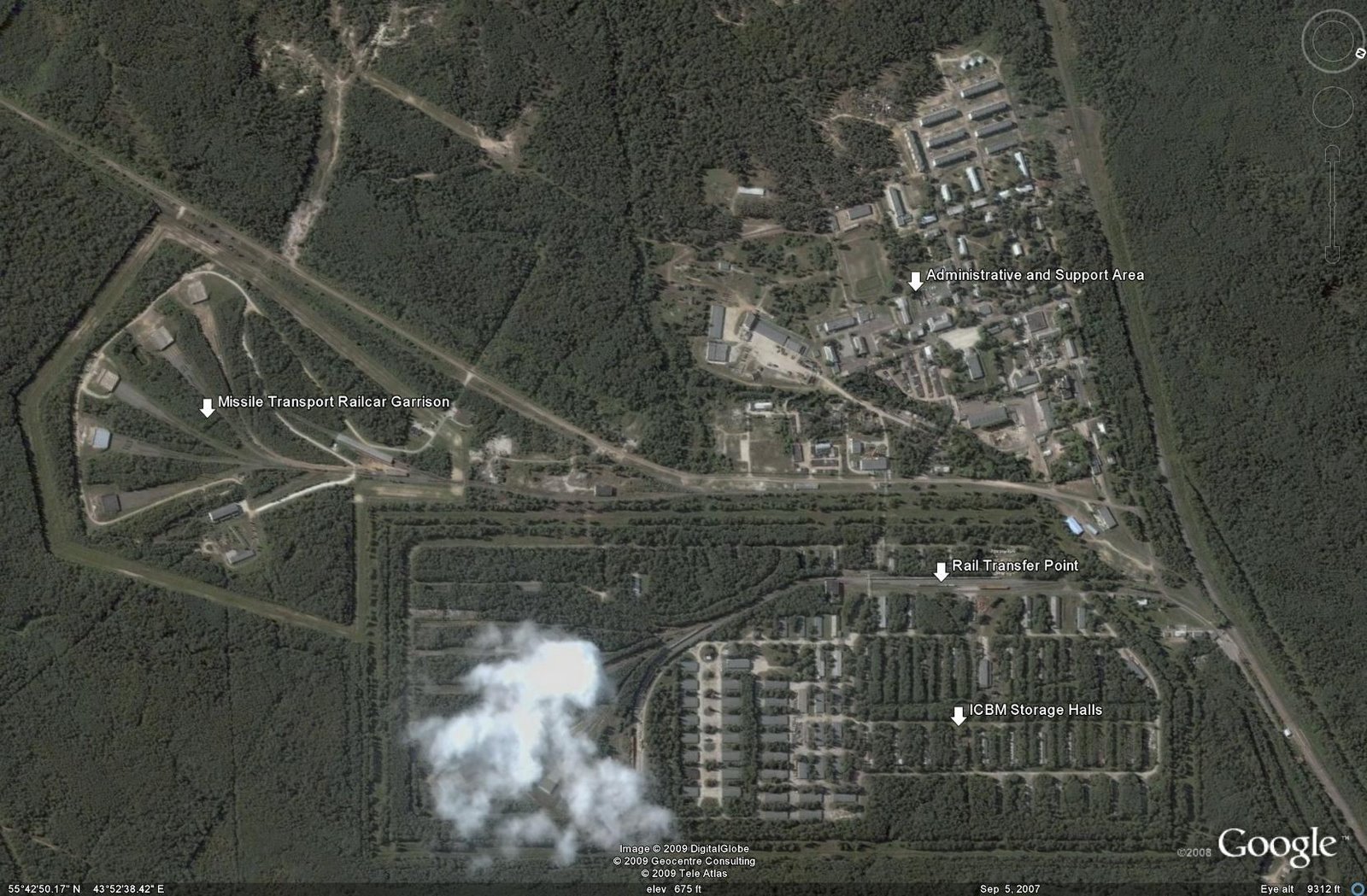 Of
the
sixteen
national-level nuclear weapon stockpile sites, fifteen may
serve the RVSN's ICBM fleet. The sixteenth is located near Olenegorsk
and is likely sited to support the Russian Northern Fleet's SLBM
arsenal. Further information regarding these facilities can be obtained
here.
|
||
Vulnerability to Pre-emptive StrikesThe current RVSN ICBM force presents for an interesting preemptive strike scenario. The most vulnerable assets are the fixed, silo-based weapons. A single US Navy Ohio-class SSBN is capable of launching 24 Trident II SLBMs. Given that each weapon typically carries 6 MIRV warheads, each submarine can strike 144 targets with a standard payload. Two Ohio SSBNs could therefore theoretically decimate the RVSN with a preemptive strike, eliminating the entire silo-based missile force, which currently stands at 222 ICBMs. Mobile ICBMs are far more difficult targets. Mobile ICBMs are capable of being erected and fired while in garrison thanks to sliding roof assemblies on the single bay garages housing the TELs. During a time of increased international tensions, however, they are likely to be widely dispersed to deployment launch sites. In this environment they would be much harder to locate, and they are available in sufficient numbers to represent a crippling retaliatory strike capability for the RVSN, even if the silo-based weapons are eliminated or incapacitated. Launching enough ICBMs to blanket likely mobile ICBM deployment areas would not be a likely option. Firstly, this would remove a significant number of available warheads from targeting plans, potentially resulting in a large number of possible military targets surviving the initial nuclear exchange. Secondly, the area which would need to be covered would be extensive. This would result in an extensive quantity of radioactive fallout being released into the atmosphere, likely resulting in as much devastation to the United States and the rest of the populated world as the nuclear exchange would cause to Russia. Given these issues, a decapitation strike would have to be planned as an extremely covert operation during peacetime, and initiated almost at random. This would help to ensure that the maximum number of mobile ICBMs could be caught in their garrisons and thus denied the opportunity to deploy to dispersed launch sites. In practice, such a decapitation strike would be problematic. The RVSN would receive warning of inbound ICBMs and likely employ a Launch-On-Warning (LOW) strategy to ensure that a retaliatory strike would succeed, effectively negating the ability of the American SSBN force to render the silo-based ICBM force unusable. Mobile ICBMs may be able to be targeted in such a scenario provided that they are in garrison, but it is likely that a portion of them are always deployed to field launch positions to prevent such an occurrence. In the event of a full-scale nuclear exchange between the United States and Russia, given that the initiating nation would only succeed in guaranteeing a retaliatory strike, what is likely to occur is as follows. American nuclear missiles would likely target critical military facilities, to include ICBM production and storage locations, national-level nuclear stockpile sites, ICBM support facilities, and ICBM silos. This would virtually guarantee that the RVSN would not be able to be reconstituted for a potential second round of missile firings. The unfortunate side effect, of course, is that the aftermath of the initial full-scale nuclear exchange would likely be crippling to both nations, and utterly devastating to the rest of the populated world. Such is the crux of the concept of mutually assured destruction (MAD); neither nation would be likely to guarantee its destruction by initiating a nuclear exchange, but equivalent nuclear arsenals are maintained on both sides to prevent either side from encountering a scenario where a preemptive strike would be an attractive option. ConclusionMore advanced and survivable assets than were ever fielded during the times of leaders such as Krushchev and Gorbachev have seen the RVSN evolve into a streamlined, deadlier version of its former self. While its strength may never again be near the levels attained during the height of the Cold War, the only real loss has been in the ability to destroy the planet a number of times beyond that required to ensure a nuclear victory over the United States during a global thermonuclear conflict. With the RT-2PM and RS-24 being tested and fielded, the RVSN will remain a potent nuclear warfighting force for decades to come. |
||
References and
Notes
|
||
|
|
||
 |
||
|
Imagery Sources: Google Earth, Russian Internet; other Internet sources. |
||
|
Technical Report APA-TR-2009-1202 |
||
|
|||||||||||||
![Sukhoi PAK-FA and Flanker Index Page [Click for more ...]](APA/flanker.png) |
![F-35 Joint Strike Fighter Index Page [Click for more ...]](APA/jsf.png) |
![Weapons Technology Index Page [Click for more ...]](APA/weps.png) |
![News and Media Related Material Index Page [Click for more ...]](APA/media.png) |
||||||||||
![Surface to Air Missile Systems / Integrated Air Defence Systems Index Page [Click for more ...]](APA/sams-iads.png) |
![Ballistic Missiles and Missile Defence Page [Click for more ...]](APA/msls-bmd.png) |
![Air Power and National Military Strategy Index Page [Click for more ...]](APA/strategy.png) |
![Military Aviation Historical Topics Index Page [Click for more ...]](APA/history.png)
|
![Information Warfare / Operations and Electronic Warfare Index Page [Click for more ...]](APA/iw.png) |
![Systems and Basic Technology Index Page [Click for more ...]](APA/technology.png) |
![Related Links Index Page [Click for more ...]](APA/links.png) |
|||||||
![Homepage of Australia's First Online Journal Covering Air Power Issues (ISSN 1832-2433) [Click for more ...]](APA/apa-analyses.png) |
|||||||||||||
| Artwork, graphic design, layout and text © 2004 - 2014 Carlo Kopp; Text © 2004 - 2014 Peter Goon; All rights reserved. Recommended browsers. Contact webmaster. Site navigation hints. Current hot topics. | |||||||||||||
|
Site Update
Status:
$Revision: 1.753 $
Site History: Notices
and
Updates / NLA Pandora Archive
|
|||||||||||||
|
|
Tweet | Follow @APA_Updates | |||||||||||
|
|
|||||||||||||
|
|
|||||||||||||
![F-111 Aardvark Index Page [Click for more ...]](APA/f-111.png)
![F/A-18 Hornet and Super Hornet Index Page [Click for more ...]](APA/fa-18a.png)
![Aerial Refuelling and Airlift Capabilities Index Page [Click for more ...]](APA/aar-lift.png)
![Directed Energy Weapons and Electromagnetic Bombs Index Page [Click for more ...]](APA/dew.png)
![Notices and Updates Index Page [Click for more ...]](APA/notices-128.png)
![APA NOTAM and Media Release Index Page [Click for more ...]](APA/notams-128.png)
![APA Research Activities and Policy / Technical Reports Index [Click for more ...]](APA/research-128.png)
![Search Air Power Australia Website [Click for more ...]](APA/search-128.png)
![Briefings and Submissions - Air Power Australia [Click for more ...]](APA/briefs-128.png)
![Air Power Australia Contacts [Click for more ...]](APA/contacts-128.png)
![Funding Air Power Australia [Click for more ...]](APA/funding-258.png)
